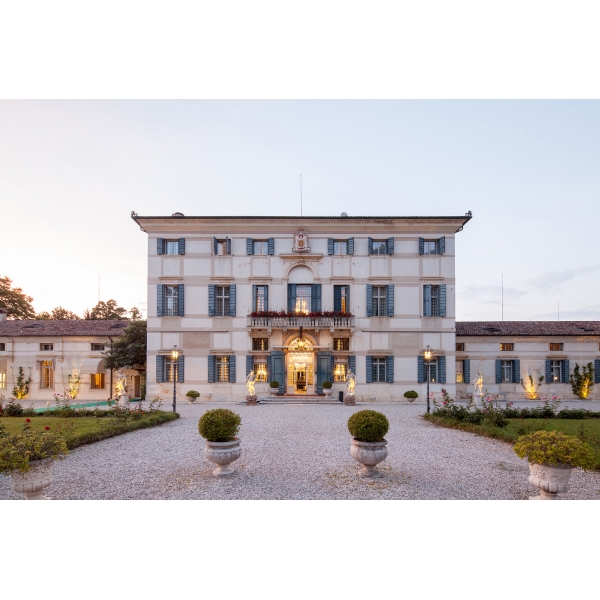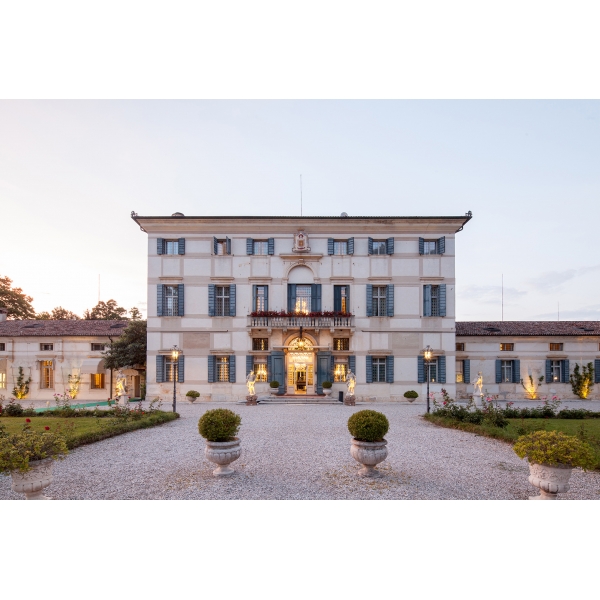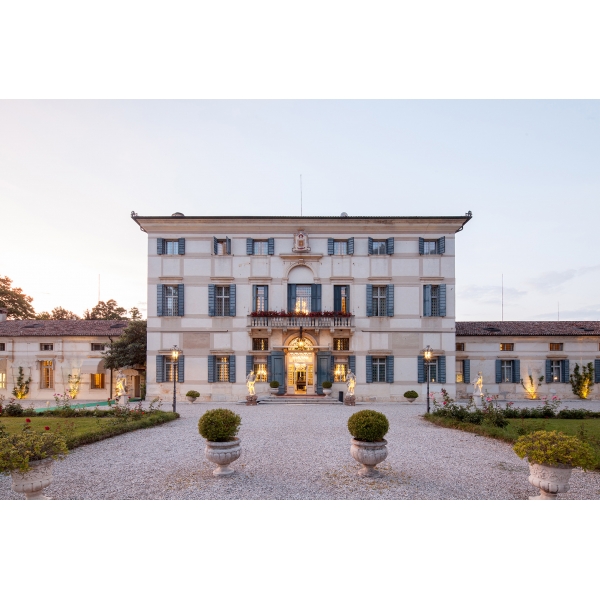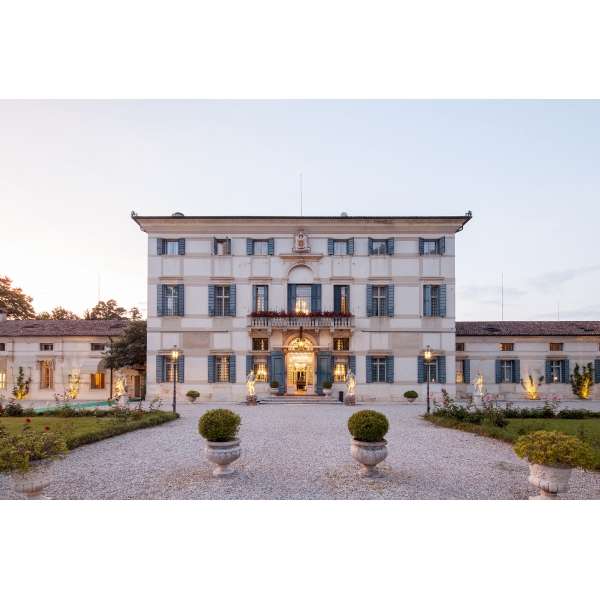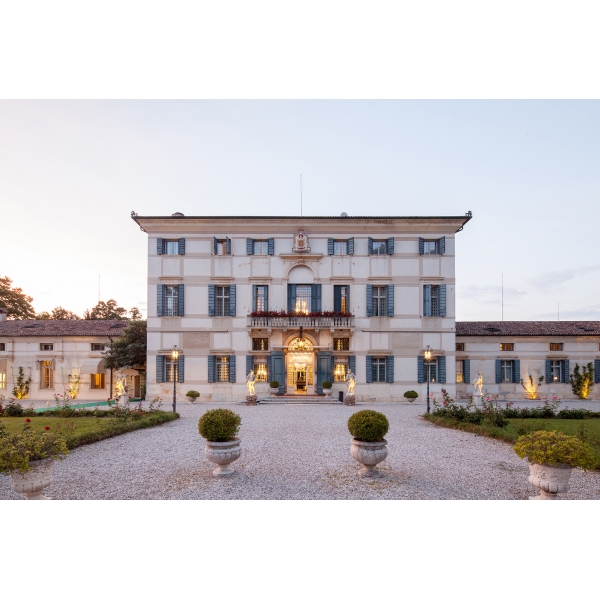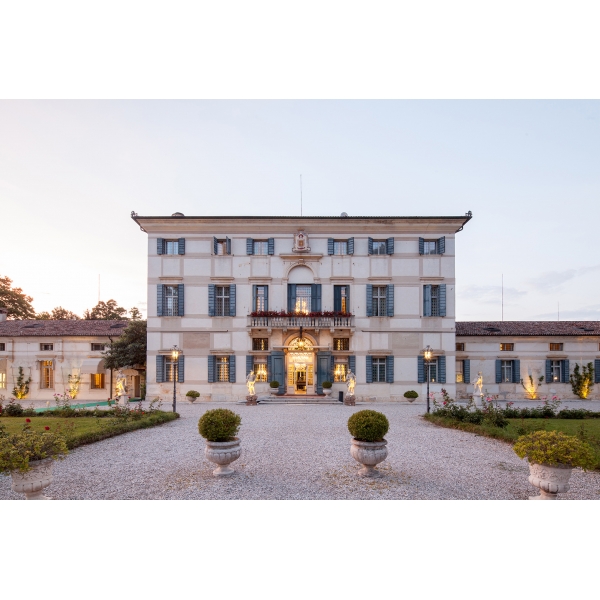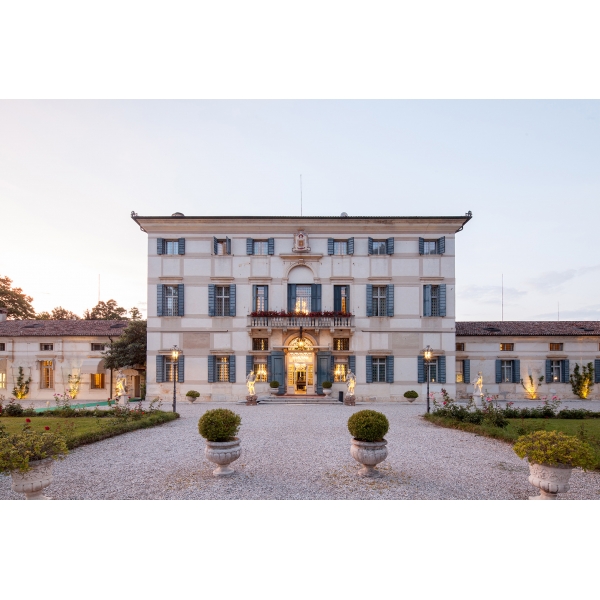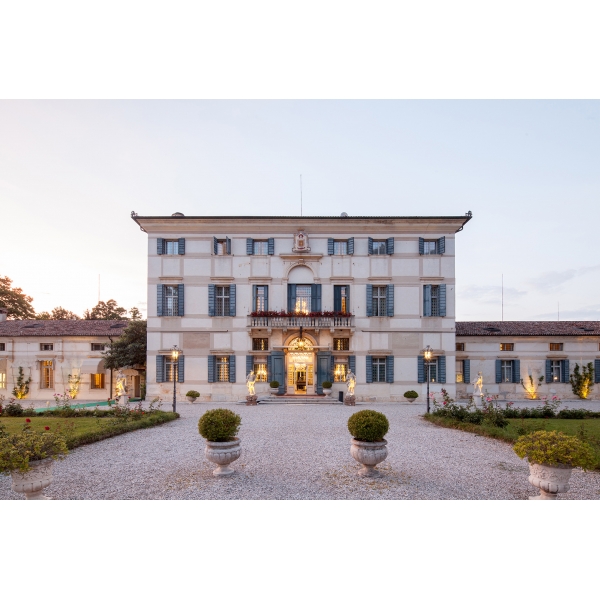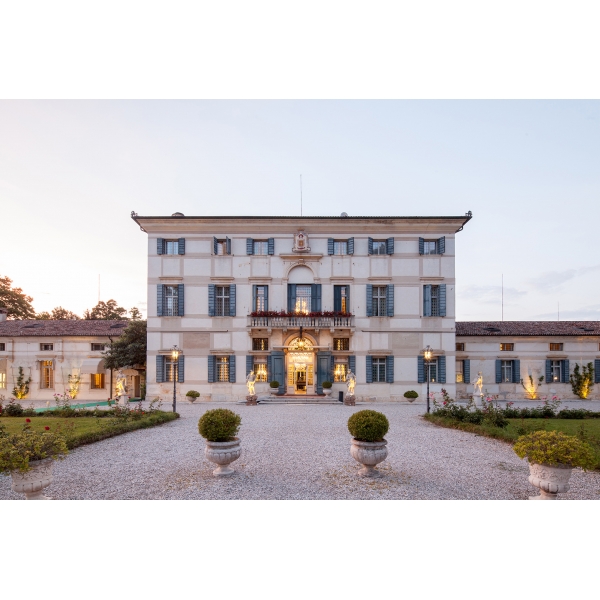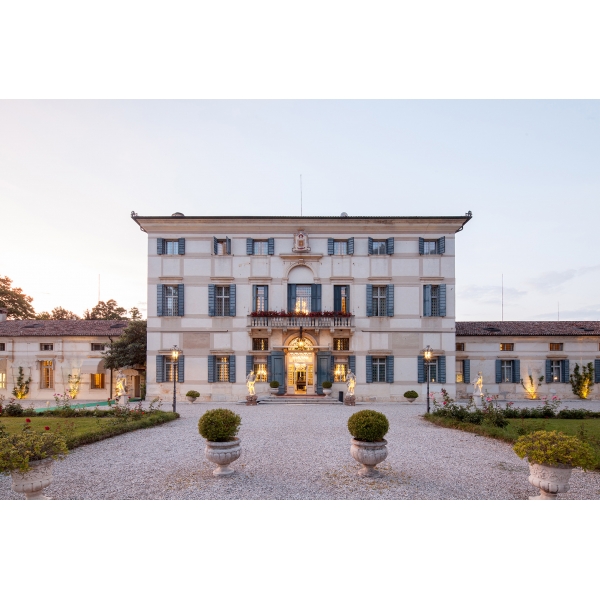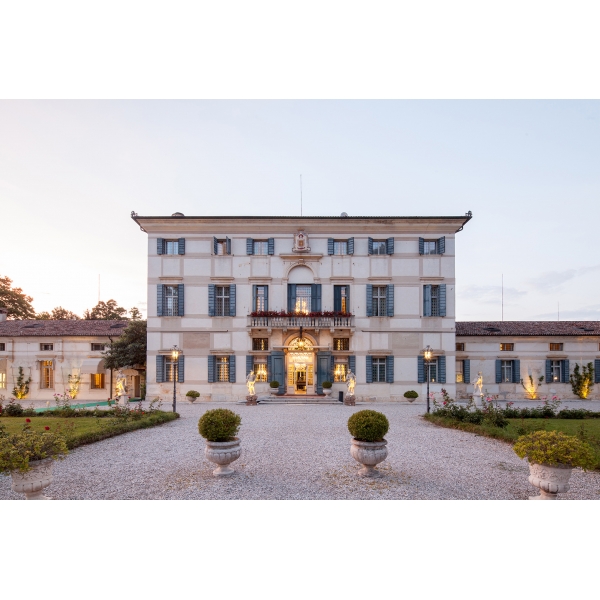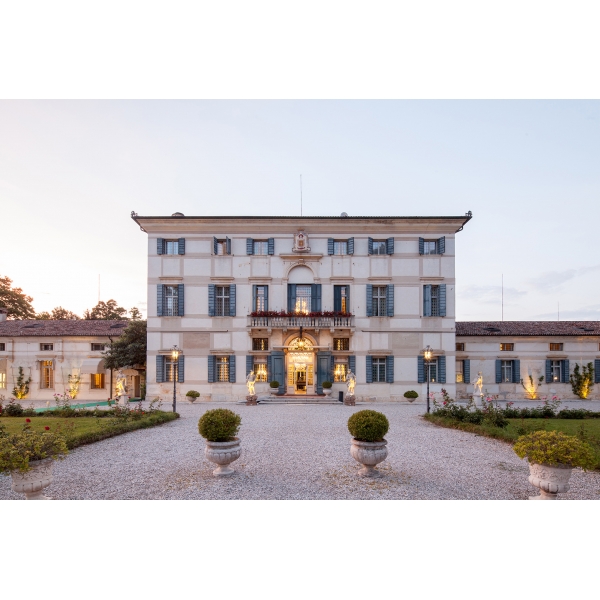No products
Categories
- Fashion Accessories
- Clothing
- Beauty & Lifestyle
-
Hi-Tech & Lifestyle
- Gaming
-
Case
- iPhone 11 Pro
- iPhone 11 Pro Max
- iPhone 11
- iPhone X / XS
- iPhone XS Max
- Samsung S10 / S10+ / S10e
- Huawei P30 / P30 Pro / P30 Lite
- Huawei P20 / P20 Pro / P20 Lite
- iPhone XR
- Samsung S9
- Samsung S9+
- iPhone 8 / 7
- iPhone 8 Plus / 7 Plus
- Samsung S8
- Samsung S8+
- Samsung S7
- Samsung S7 Edge
- iPhone 6 / 6 s
- iPhone 6 Plus / 6 s Plus
- iPhone 5 / SE
- Skin
- Audio
- Smart Home
- Drones & Hoverboard
- Photo & Video
- Desk Supplies
- Accessories
- Games
- Beverages
- Food
- Home
- Jewelry
- Luxury
- Travel
- Art
- Footwear
- Vintage Fashion
- Restaurants
- Sport
- Animals
- Gift Ideas
- Kidswear
Extra
Villa Condulmer
Venetian Villa of The '700 - Hotel, Resort & Golf Club
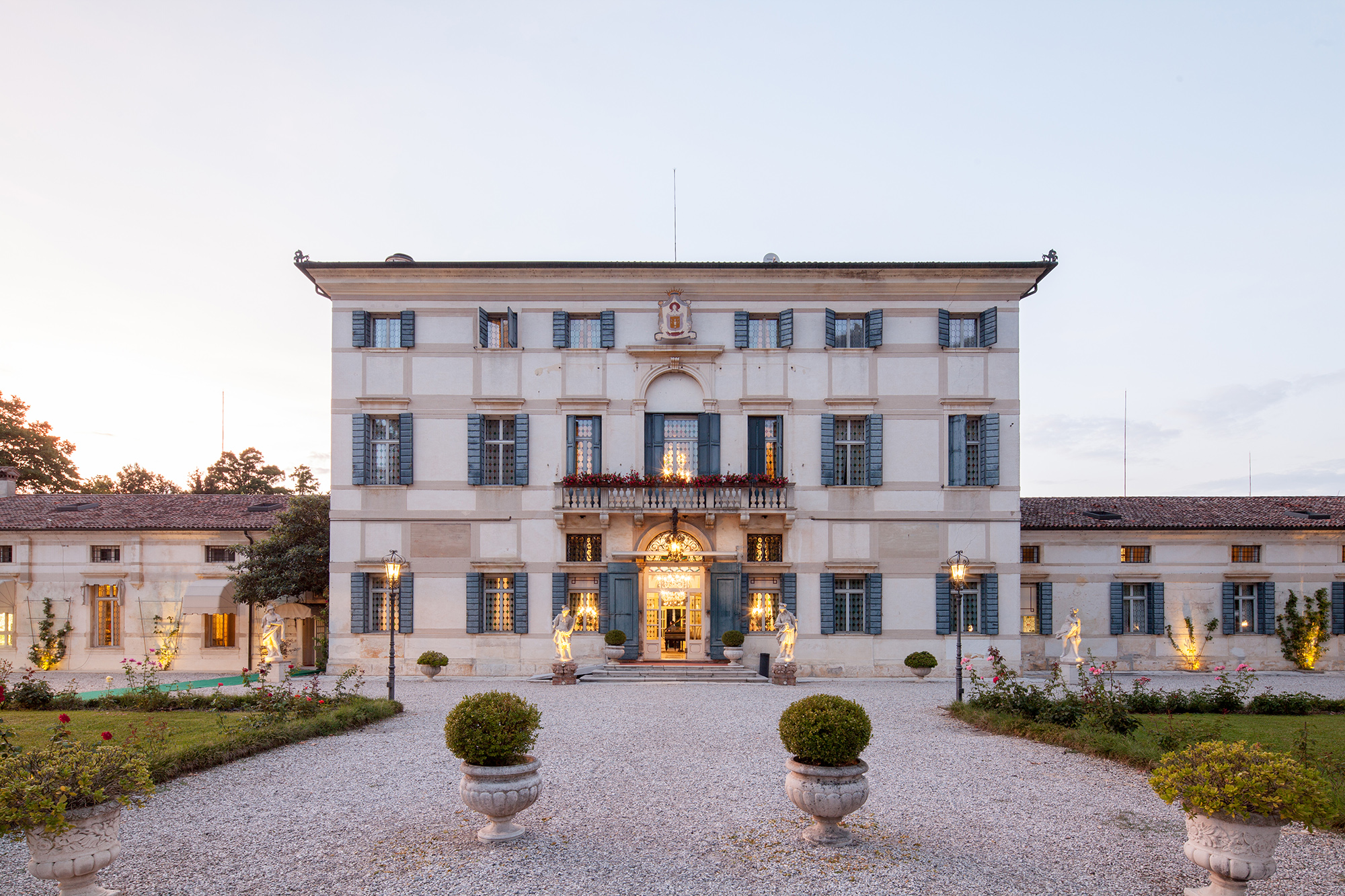
An Enchanted Place
A Venetian villa dating back to the first half of the 1700s which stands on an ancient convent of the 1500s. Since 1960 Villa Condulmer has been a 5-star hotel with a golf course, restaurant, swimming pool and American bar. Protected by the Fine Arts since 1930, it is a place of charm and absolute historical-cultural importance where Verdi wrote the definitive version of the “Traviata” on the piano, still present in the Hall. Here you can immerse yourself in history by crossing the hall and observing the signs of time painted on the frescoed walls.
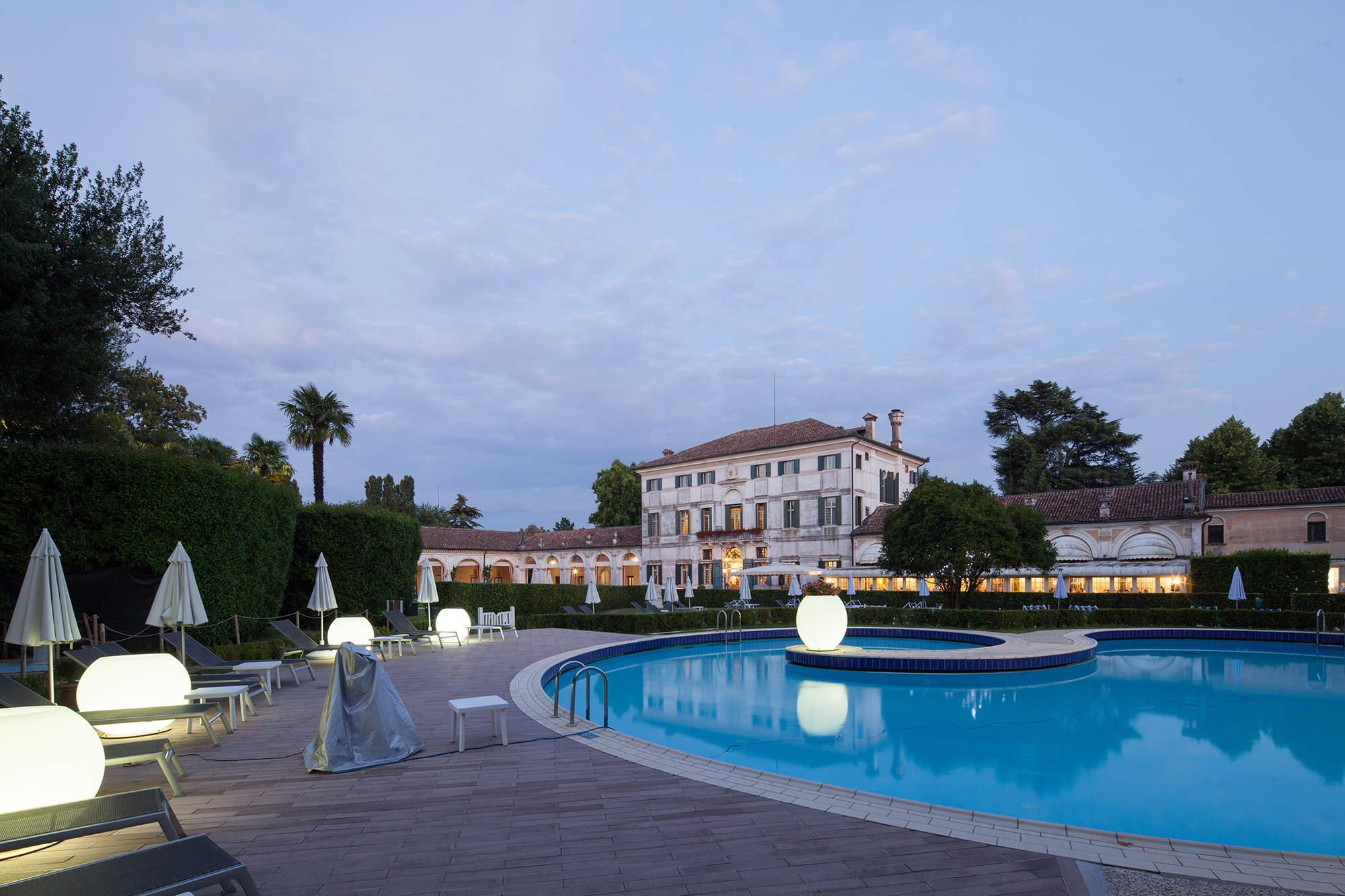
Climbing the stairs at the entrance to the villa, you get lost in the huge spaces of the noble floor, from which you can see the royal suites that refer to the events of the artists from the world of music, cinema and politics who have stayed here. From Ronald Reagan, Lix Taylor, Mick Jagger to Placido Domingo and Sting to Vasco Rossi. Going up to the top floor, one imagines the great characters of our literature looking out of the windows, while looking at the park and garden that inspired those poems that have become the heritage of our present. You want to go back to the ground floor and walk through a new door to find out what else the eighteenth-century halls hide. As we leave the park, which looks like a forest with its centuries-old trees, awaits us. The fascinating architecture is reminiscent of art history books and everything refers to the typical feasts of the time with the tables set, smelling the cigar that a man smokes sitting on a wicker chair.
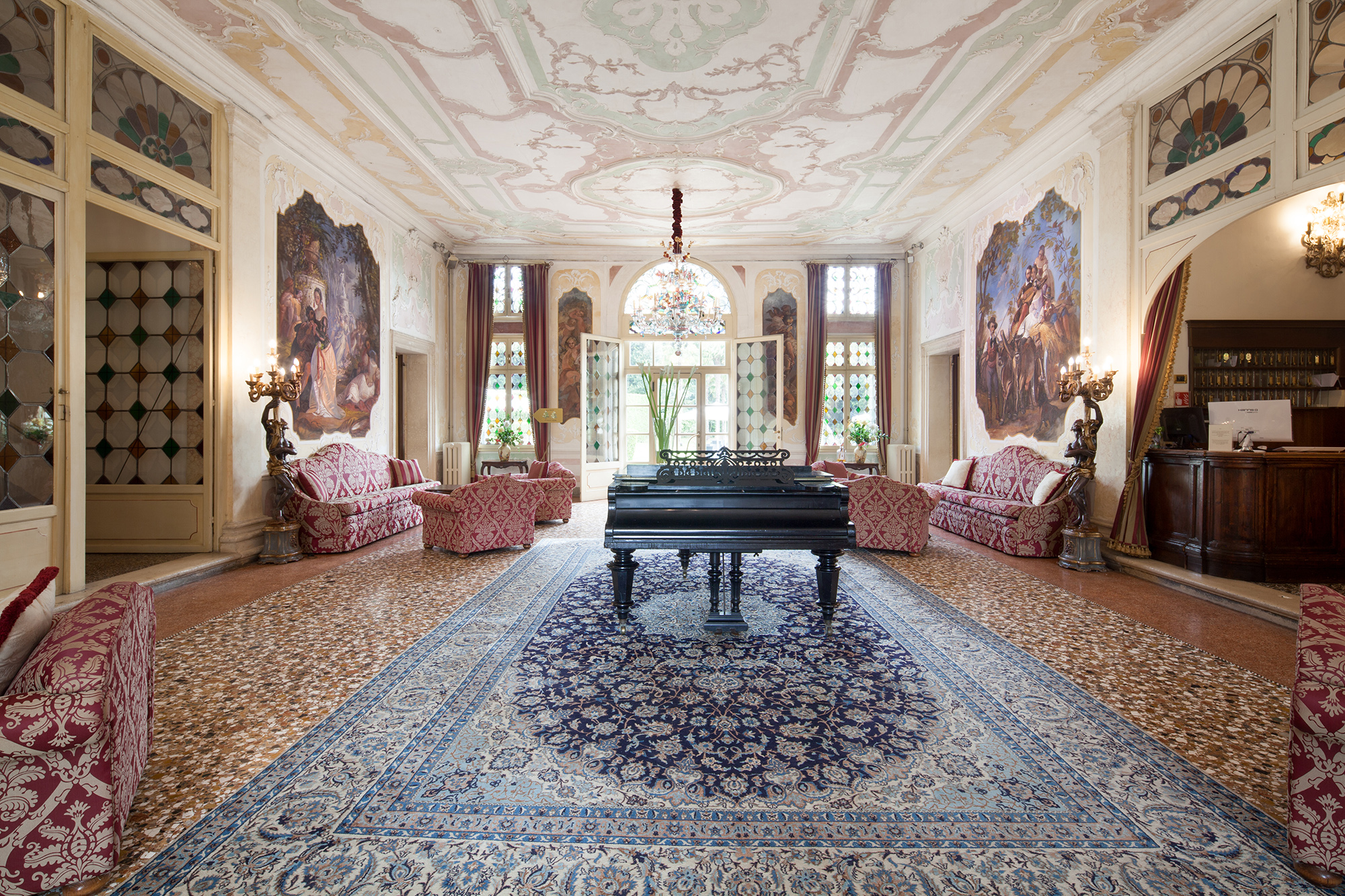
The luxurious hotel offers 47 rooms, including 20 classic double rooms, 12 executive junior suites, 7 garden suites and 8 historic suites. A restaurant with 230 indoor seats and an outdoor summer restaurant with 600 seats. In addition to the centuries-old park with lake and 16th-century ruins, the swimming pool open from 1 June open until September and the 18-hole + 9-hole golf club and club house. The services also include the heliport and spaces for events such as meetings, conferences and ceremonies.
Architecture and The Park

According to the dictates of the Venetian Villas of the eighteenth century, which sees the most grandiose examples of villas, clients and wealthy families, it is the representative space that is privileged, with the stately building preceded by the garden in an axial configuration. The main entrance, located on the eastern side at the end of an avenue, is characterized by a wrought iron gate with exposed brick pillars and ashlar finishes, all decorated with statues.
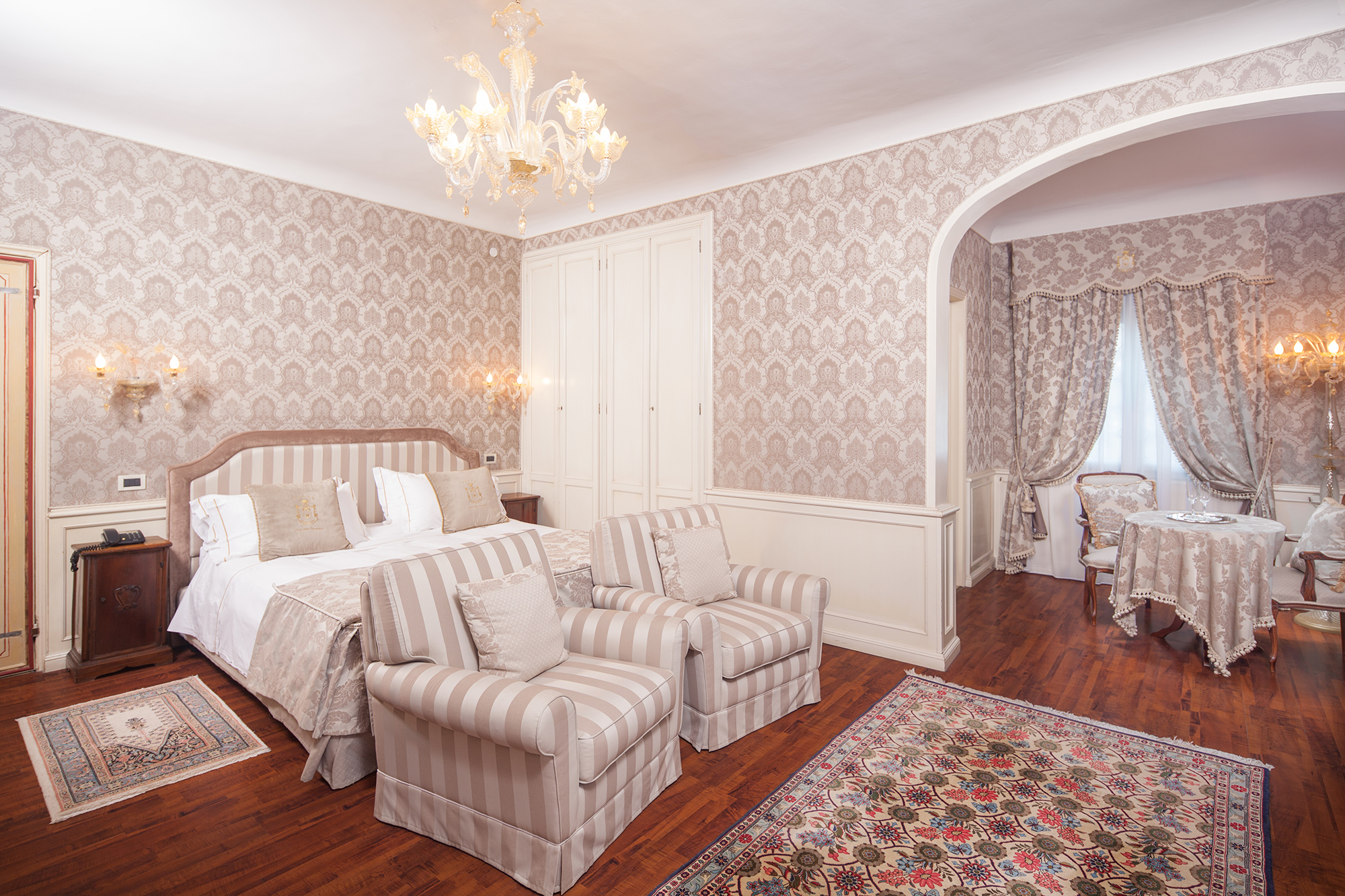
Following the driveway, after the central statue surrounded by a flower bed, the two monumental centuries-old trees represented by the Atlas cedar on the left and the Lebanese cedar on the right. The two majestic plants adorn the entrance to the stately building, which faces south on its main front, despite the fact that the two facades are identical to each other.
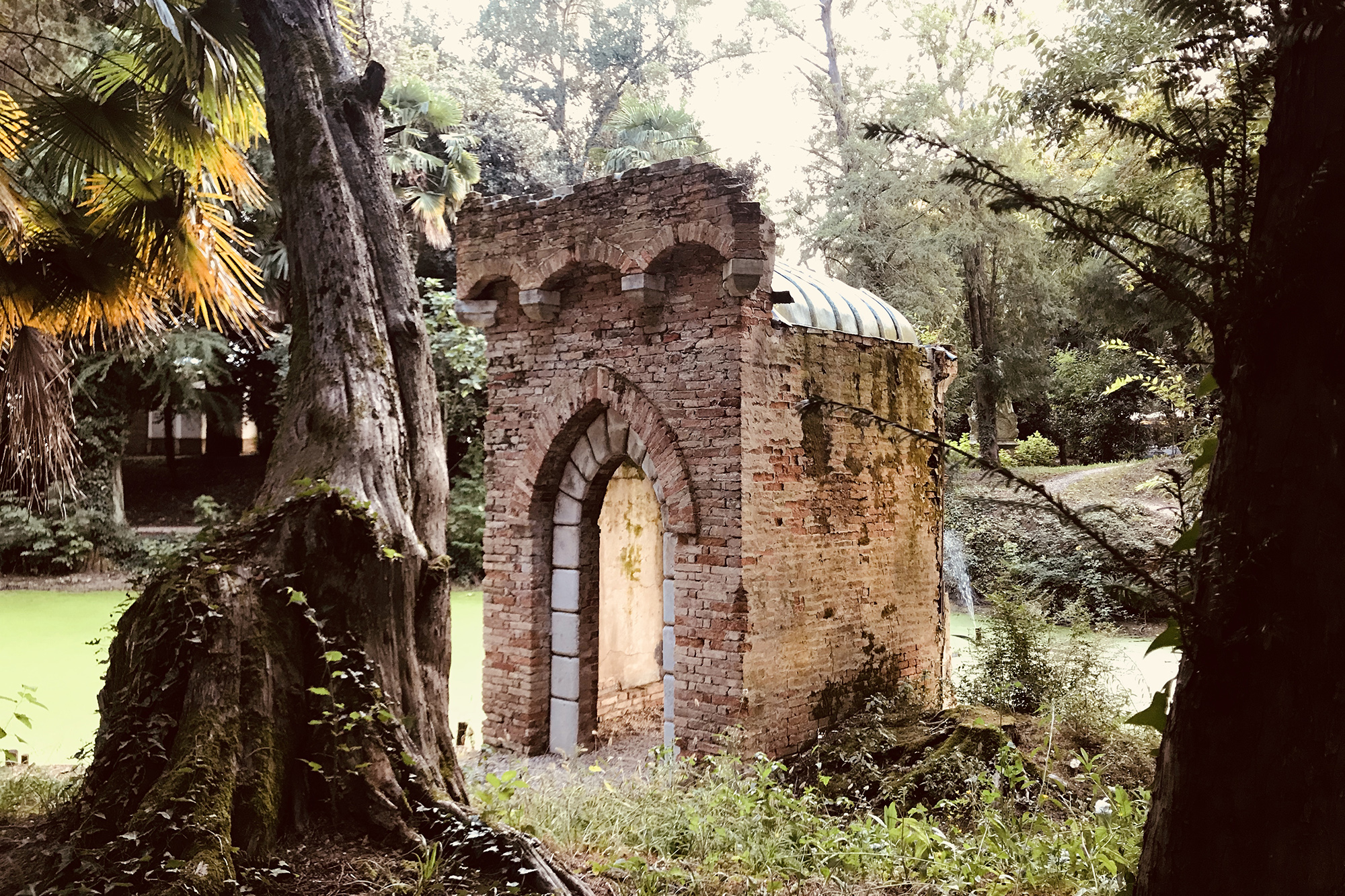
The ground floor is slightly raised, with four steps leading to the entrance, after which the visitor is welcomed by the large passing hall, the fulcrum of the building. The flooring is in Venetian terrazzo; walls and ceiling are adorned with valuable stuccoes; the two ancient and rare handmade Murano glass chandeliers are symmetrical and majestic. Also in the hall, you can admire 4 bucolic-themed frescoes, made around the mid-19th century by the painter Eugenio Moretti Larese. In particular, the second on the right, portrays the then owner of the Villa, Count Giovan Battista Tornielli, together with his friend Giuseppe Verdi. The composer at the invitation of the count, stayed in the Villa from March 1853, to relax after the much criticized “prima” of La Traviata.
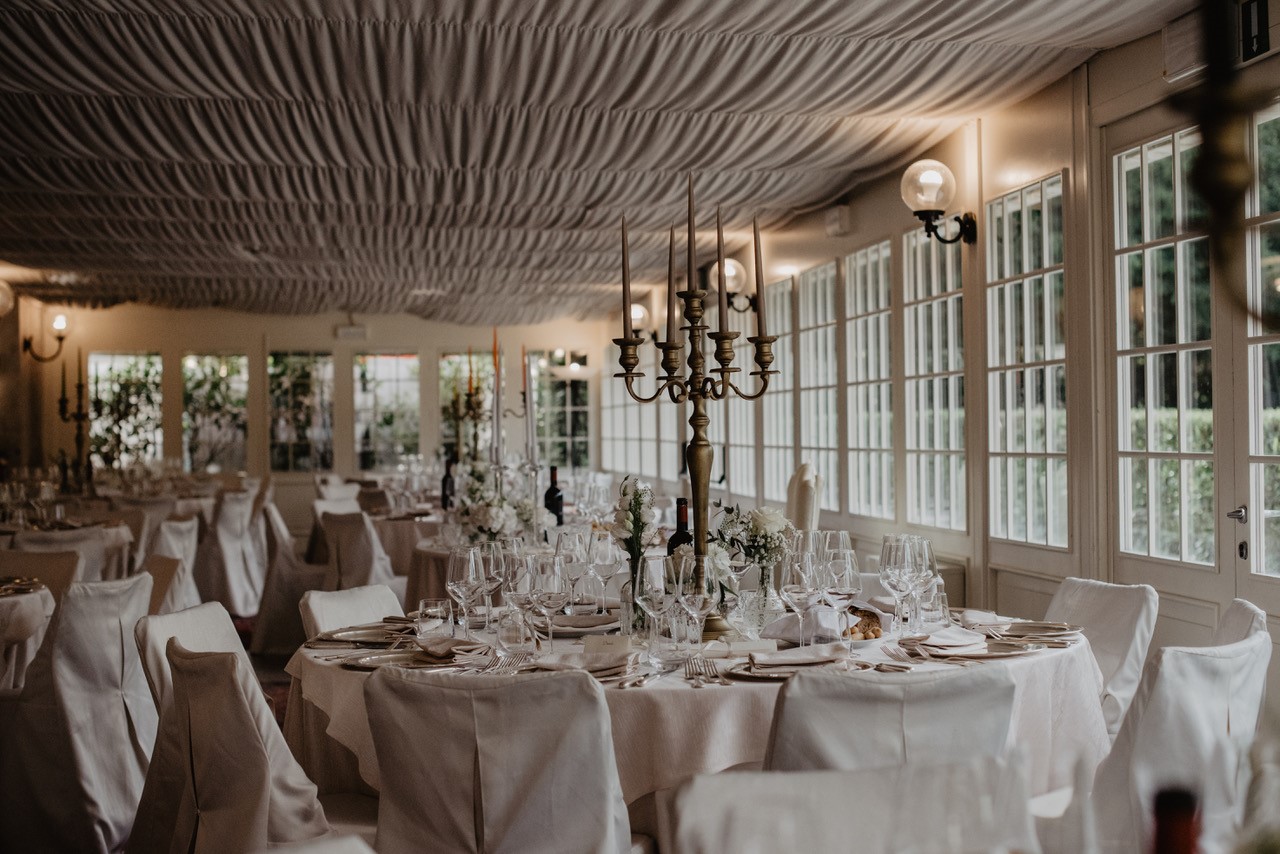
In the central part of the hall a large arched door is flanked by a window on each side. Going up the stairs, symmetrical to each other, you arrive at the main floor, also characterized by a large living room with a Venetian terrazzo floor, an imposing majestic eighteenth-century Murano glass chandelier in the center of a valuable noble coat of arms, a protruding terrace, and a remarkable verticality.
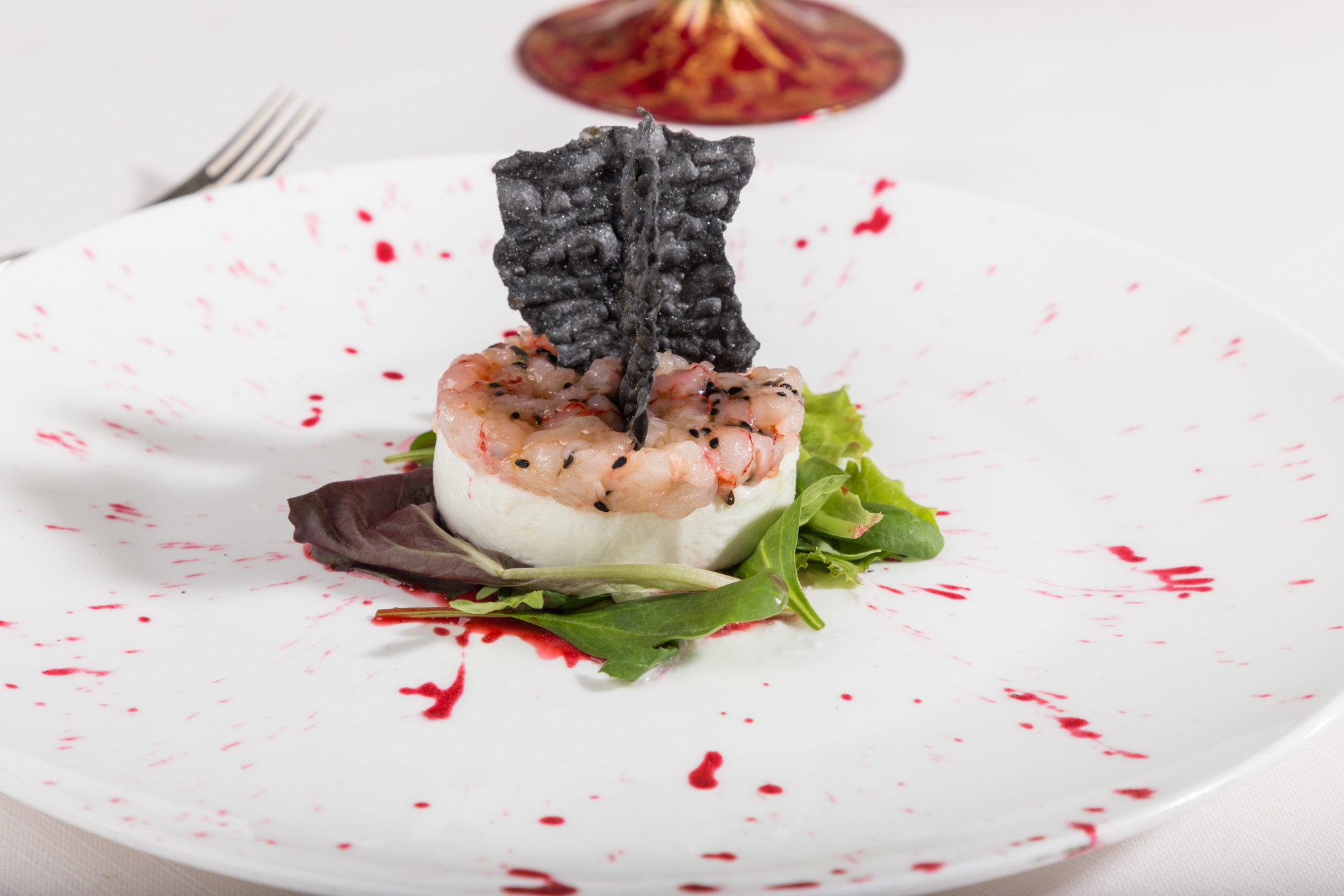
The pride of the Villa is the large eighteenth-century park designed by the architect Sebatoni, where it is easy to relax in peaceful walks in the quiet. There are numerous imposing and rare trees, cataloged as monumental and secular. In particular, at the edge of the pond, the rare specimens of Cypress of the Marshes. Of particular interest is the small pavilion overlooking the lake, the statues, the ruins, the numerous flowers and essences typical of centuries-old parks; finally, the large and beautiful swimming pool surrounded by greenery. Adjacent to the park of the villa, an eighteenth-century chapel, currently deconsecrated.
The Hotel and The Historic Villa Suites
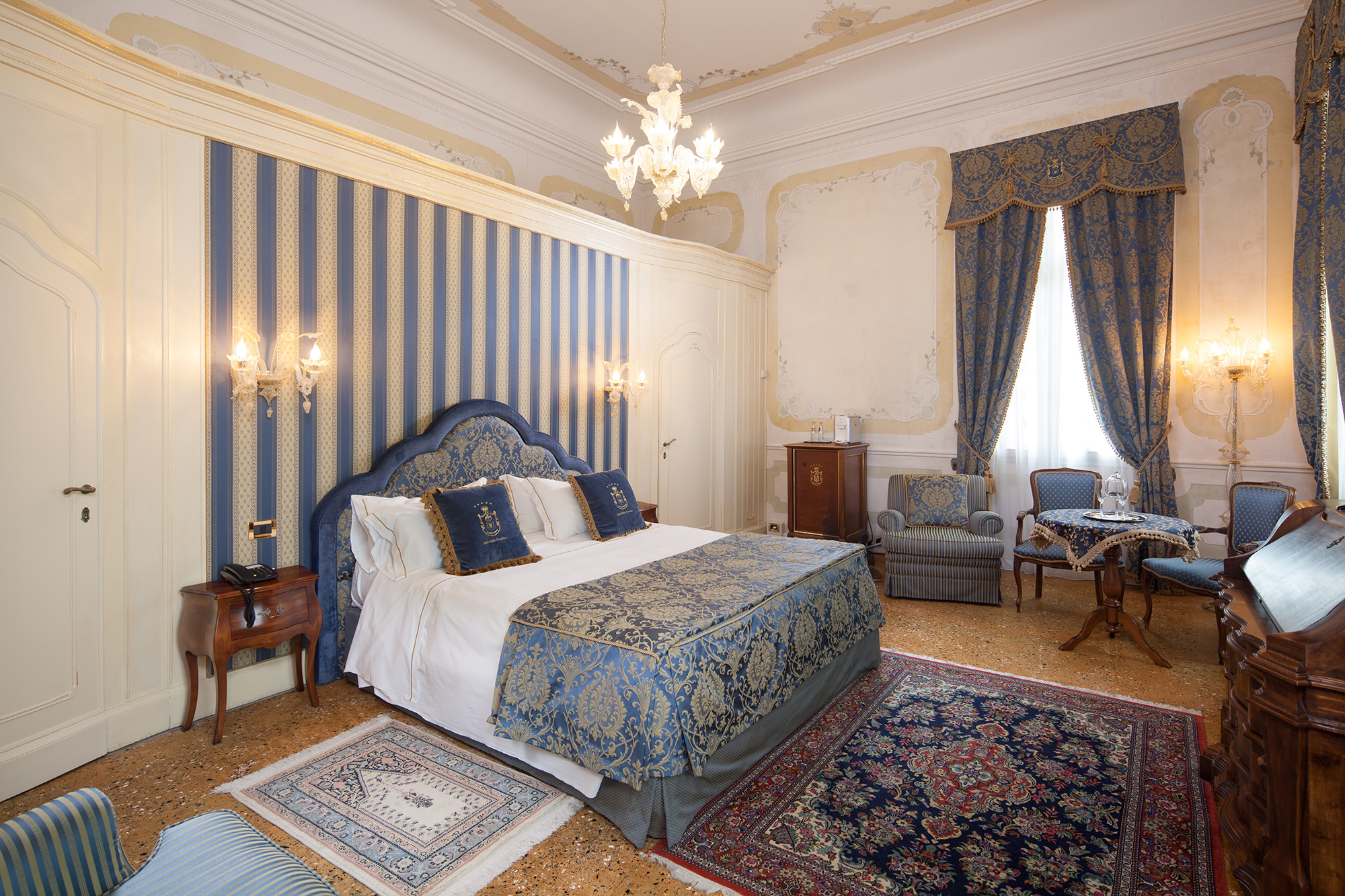
Over the years the hotel has acquired international fame, so much so that not a few celebrities of music, cinema or politics have stayed in the suites, some of which, the eight historic rooms of the central body of the Villa, are named after them. Among the prominent guests there are, in addition to the composer Giuseppe Verdi, who stayed at the time of Count Giovan Battista Tornielli, personalities of the caliber of Ronald Reagan, Liz Taylor, Richard Burton, Mick Jagger, Placido Domingo, Sting and many others. .
Suite n° 1 “Giuseppe Verdi”
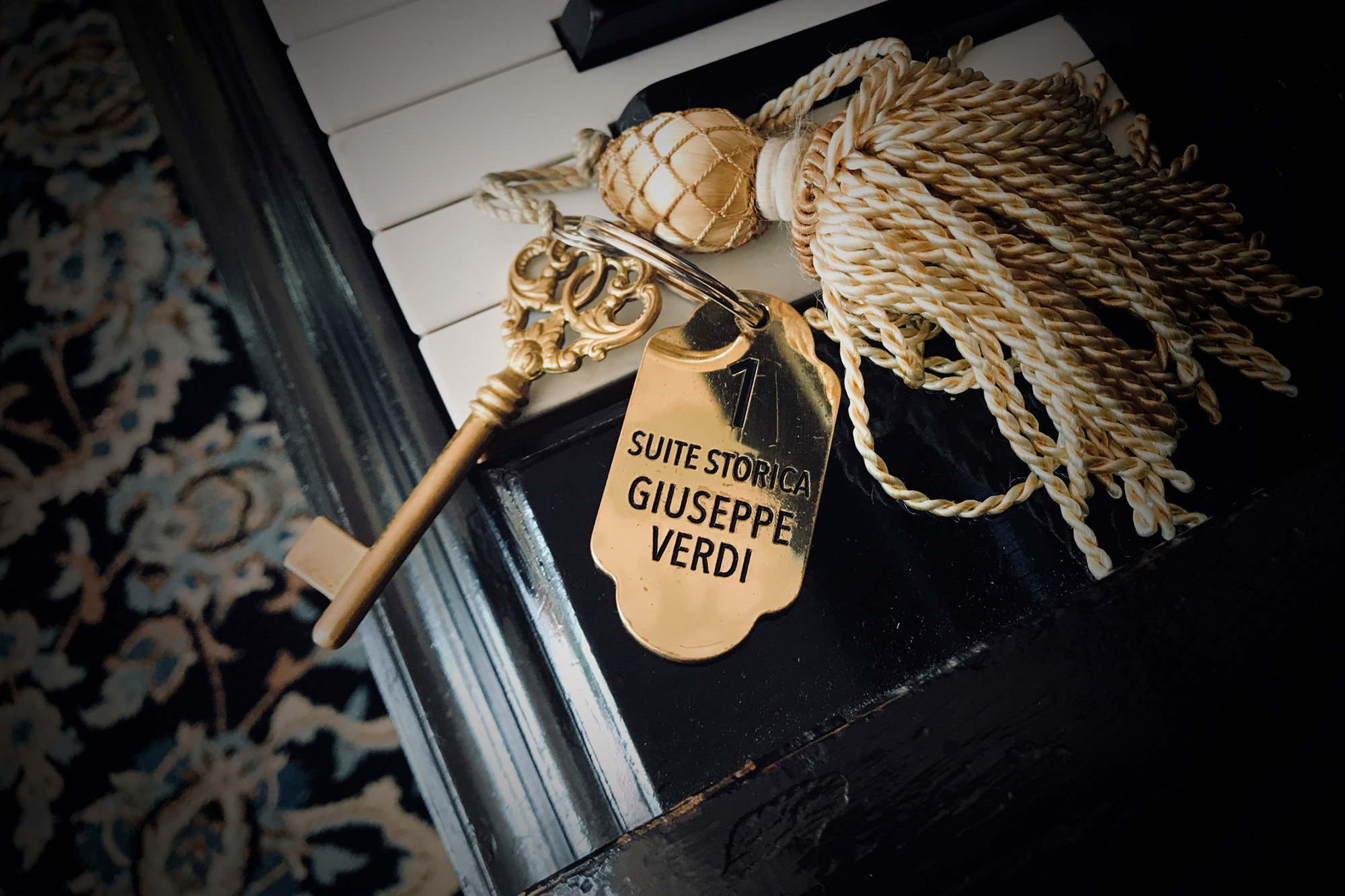
A suite dedicated to Giuseppe Verdi, the composer of Nabucco, Rigoletto, Traviata, Aida, Otello, Giovanna d'Arco, Macbeth and much more is unmissable. The composer was deeply attached to the Villa and to Count Tornielli. Giuseppe Verdi's stay at Villa Condulmer was due to a failure. On March 6, 1853, the premiere of one of his most famous works was staged at the Teatro La Fenice in Venice: La Traviata. But it was heavily booed by the audience in the room, resulting in the author's disappointment and dejection. The president of the theater at that time was Count Giovanni Battista Tornielli, who had inherited Villa Condulmer and the Zerman estate from the last descendant of the Grassi family. A great lover of music and tied to Verdi by sincere friendship, the count invited the composer to stay with him in the Villa, far from the usual environments.
Right on the piano of Villa Condulmer, still present in the Villa, the Traviata was revised and rewritten by its author to become the famous timeless success we know today. Of Giuseppe Verdi's stay in the Villa, in addition to the aforementioned piano, there remains the beautiful fresco commissioned by Count Tornielli to the painter Eugenio Moretti Larese, depicting the same count driving a cart pulled by oxen and on which Verdi sits in the act of playing a lute, in the midst of a cheerful brigade. The other three beautiful frescoes that dominate the entrance hall of the Villa are by the same author.
Anecdotes and Curiosities
It is said that the very night in which Verdi arrived near the Villa, where he would have found refuge and tranquility after the failure of his premiere at the theater, he was the victim of an accident: the carriage on which he was traveling went off the road, and the horses and passengers were ruined. in the lateral moat. Giuseppe Verdi (1813 - 1901) was an Italian composer universally recognized among the greatest opera players, author of melodramas that are part of the repertoire of theaters all over the world. He dominated the opera scene after the great protagonists of the early nineteenth century.
Suite n° 2 “Liz Taylor”
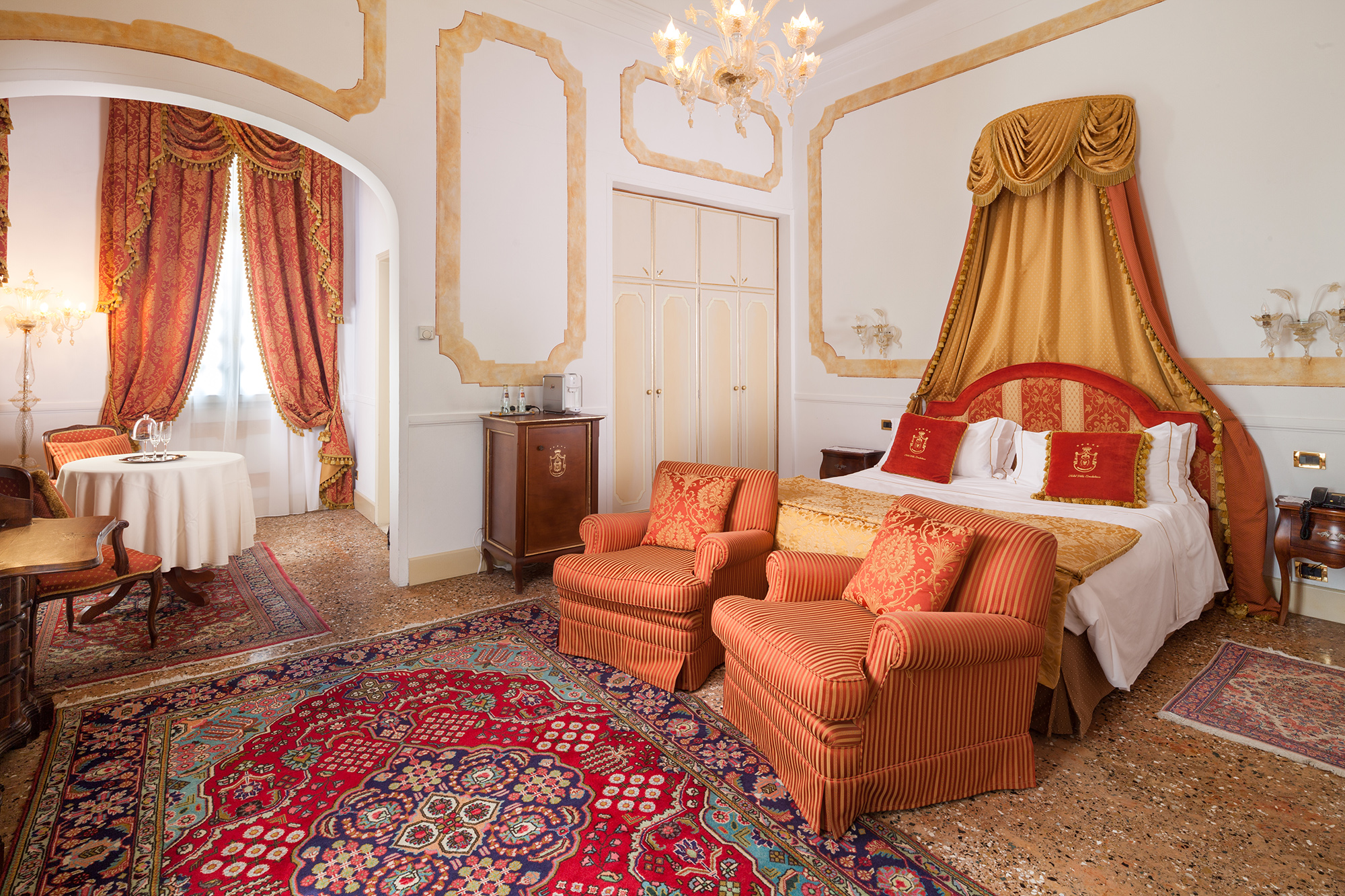
Suite No. 2 of the Villa is named after the beautiful Elizabeth Taylor, in memory of her stay that had the diva of “The Taming of the Shrew” and “Cleopatra”, a guest in her Villa together with her famous husband, Richard Burton. Winner of 2 Oscars for Best Actress, in 1961 for "Venus in Mink" and in 1967 for "Who's Afraid of Virginia Woolf," Taylor is still considered one of the most beautiful and talented actresses in the history of cinema.
Anecdotes and Curiosities
Elisabeth Taylor and Richard Burton's stay in the Villa took place during the filming of the film "The Taming of the Shrew", which arrived in theaters in March 1967. During the making of the film, the two actors decided to take a sudden break of three months during the which traveled a lot. Among their goals, they chose to spend a whole week at the Hotel Villa Condulmer. There is evidence of their confidential presence from the family of the then upholsterer of the Villa, Cav. Giuseppe Barbon, who was ordered a table habillè for the occasion.
Suite n° 3 "Artists' Suite"
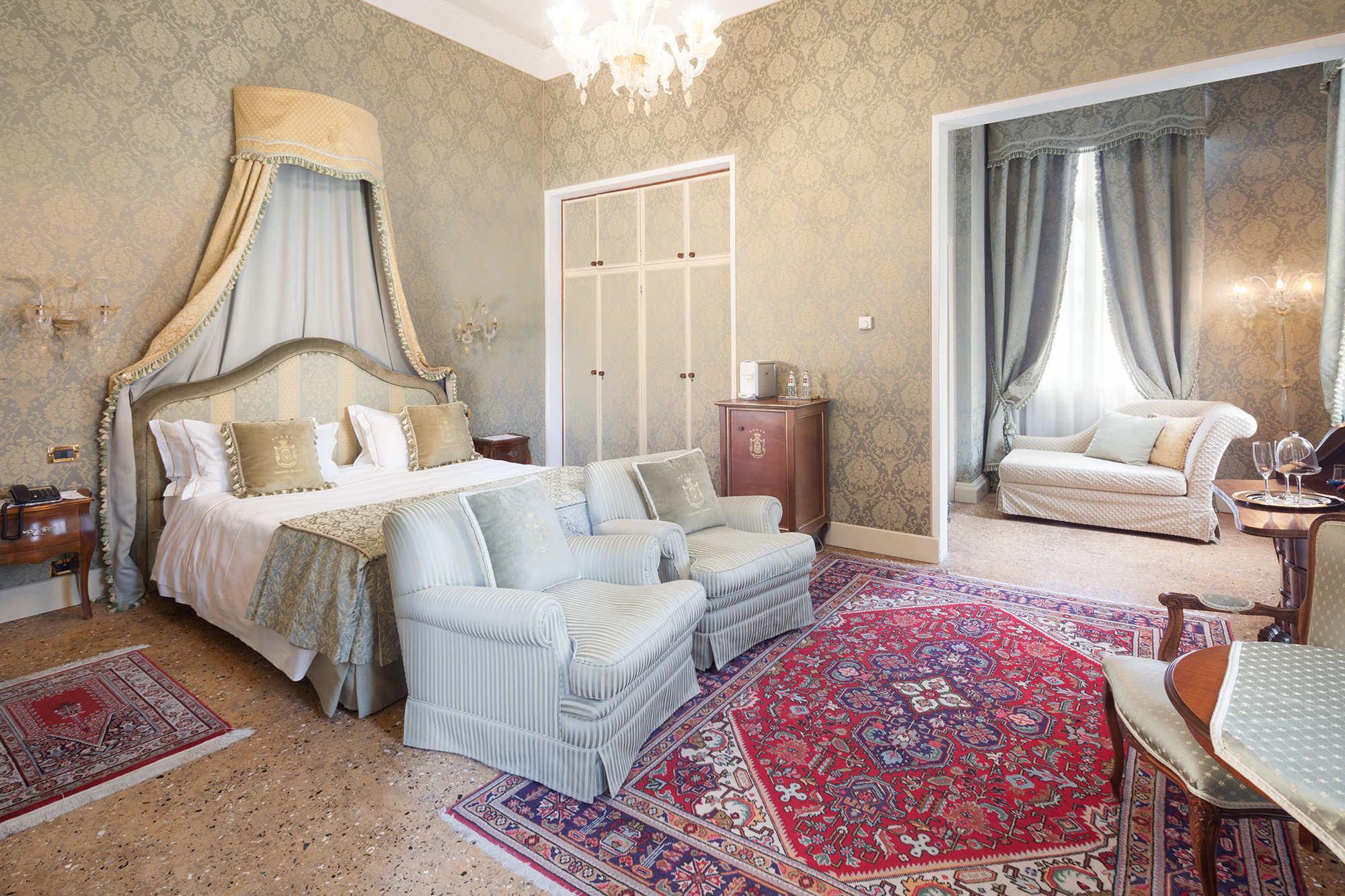
Suite No. 3 of the Villa is dedicated to all the artists who have frequented Villa Condulmer, attracted both by the prestigious "Condulmer Recording Studio" adjacent to the hotel, and by the extraordinary quiet that reigns in the Villa. The peace and tranquility that we normally breathe, have repeatedly put artists in a position to find inspiration for their works.
Among the most famous artists who recorded at Studio Condulmer and who stayed in the Villa: Placido Domingo and Katia Ricciarelli; but also the Duran Duran, Sting, Sade, Mick Jagger, as well as Gino Paoli, Ornella Vanoni, the Poohs, Paolo Conte, Claudio Baglioni, Renato Zero, Umberto Tozzi, Tiziano Ferro, Zucchero, Vasco Rossi, and many others enrich the parterre of our most famous clientele.
Anecdotes and Curiosities
Adjacent to the Villa from 1985 to 2009 was the "Condulmer Recording Studio". Most of the artists who recorded their music in the studio were also guests of the Villa, some for a few nights, some for long periods. Tranquility and peace, characteristics of the Villa, constituted an optimal mix for authors, composers and singers. Zucchero Fornaciari, affectionate guest of the Villa, had his most significant presence in 1985 when, together with the actor Gérard Depardieu, he recorded "A little help". The entire clip, with the two leading artists, was shot between the Villa and the Studio. Vasco Rossi chose to stop more than once in the quiet of the Zerman countryside and his famous 1993 hit "Vivere" was composed in one of the garden wing suites.
Gino Paoli stayed in the Villa in 1991 during the recording of his famous song "Four friends at the bar". The song, which was inspired by Vasco Rossi's musical style and represented a decisive stylistic change of the artist, was a huge success and won that year's Festivalbar. Sade Adu in 1992, after the album "Stronger than Pride" and four years of silence, finally resumed recording and did it right in the Condulmer Studio, with the song "Love Deluxe". He stayed in the Villa during that period, "running away from the usual annoyances", as he explained to Repubblica journalists during the interview. Sir Mick Jagger, leader of the legendary Rolling Stones, stayed in the Villa with his wife Jarry Hall, during the early nineties.
Suite n° 4 “Ronald Reagan”
Suite number 4 of the Hotel is named after Ronald Reagan. In 1987, the then American president went to Italy to attend the G7 which that year was held in Venice, on the island of San Giorgio. On Wednesday 3 June 1987 at 10:15 pm, American President Ronald Reagan and his wife Nancy landed at Venice's Marco Polo airport. Here a helicopter awaited them to take them to the historic hotel.
The strategic position, the tranquility and silence, and last but not least the possibility of doing sports and walking in the park, as requested by the President, made the Villa an excellent headquarters. For the occasion, the Hotel Villa Condulmer was surrounded by a police cordon to ensure the safety and security of the then most important president in the world.
Anecdotes and Curiosities
A lot of work was done in the hotel on that occasion to meet the requests of the President and his large staff. Nancy loved red roses, while a couple of excellent horses were at the President's total disposal in the adjacent stables. The Reagan's rooms were enriched with precious furniture and paintings, although at the last moment Mrs Reagan decided that they would not sleep, according to plan, in separate rooms.
In a hurry they then brought the double bed used in the White House from Washington: a large chest of drawers with a blue bedspread, to which, thanks to the antique dealers of the nearby city of Treviso, a 15th-century headboard was added. Also thanks to them, the room was also enriched by a 17th century Annunciation, two 16th century stone capitals on the sides of the bed as bedside tables and a large 18th century gilded mirror. The photo of the Presidential Couple with a dedication to the property is exhibited in the green sitting room next to the central hall (Hall).
Suite n° 5 “Pope Eugenio IV”
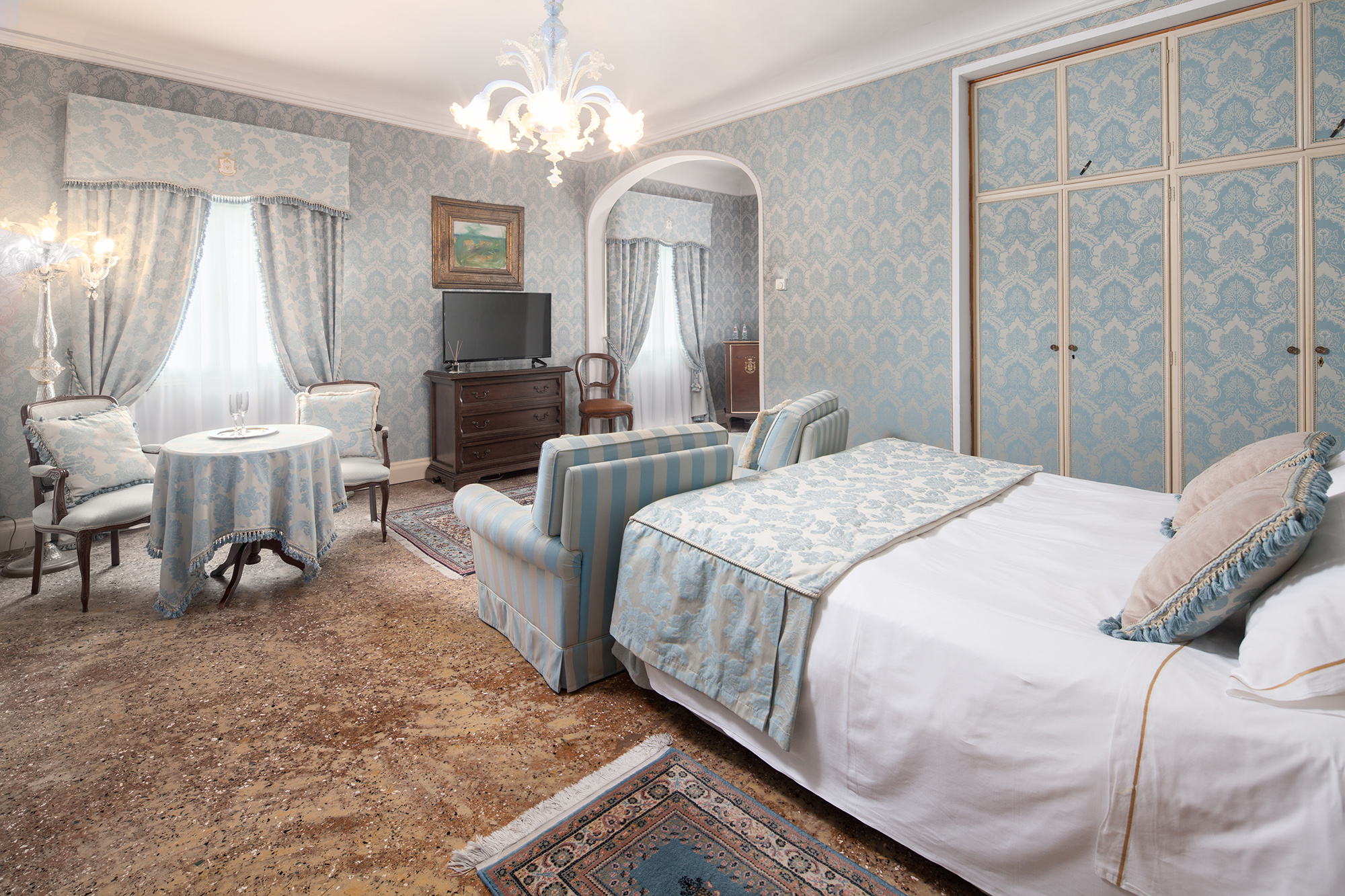
The most illustrious ancestor of Alvise Condulmer, the Venetian patrician who commissioned the construction of the Villa, is certainly Gabriele Condulmer, better known as Pope Eugene IV. He was born in Venice in 1383. He was the 207th Pope of the Catholic Church, until his death in 1447.
Pope Eugene IV is remembered for having been put on the run from Rome by the powerful Colonna family who, thanks to the intercession of Pope Martin V, born Ottone Colonna and predecessor of Eugene IV, had cleverly stolen large quantities of land, through the Church. Catholic, in favor of various members belonging to his family. Pope Eugene IV, during his pontificate, had then confiscated these assets. The Colonna family retaliated by removing the dominion over Rome from Eugenio. The pope saved himself by going into exile in May 1434. Disguised in monk's clothes and taken to a Florentine vessel on the Tiber, he secretly reached Florence, where he was rehabilitated with the help of Cosimo De 'Medici. Only after ten years of exile, which also saw him in Venice and Bologna, did Pope Eugene IV regain possession of Rome. He is described by historians as averse to heresy, against slavery in the Canary Islands, of great goodness towards the poor. Never guilty of nepotism, he was a lover of art and study. Our suite n ° 5 is dedicated to him.
Suite n° 6 “Margherita Condulmer”
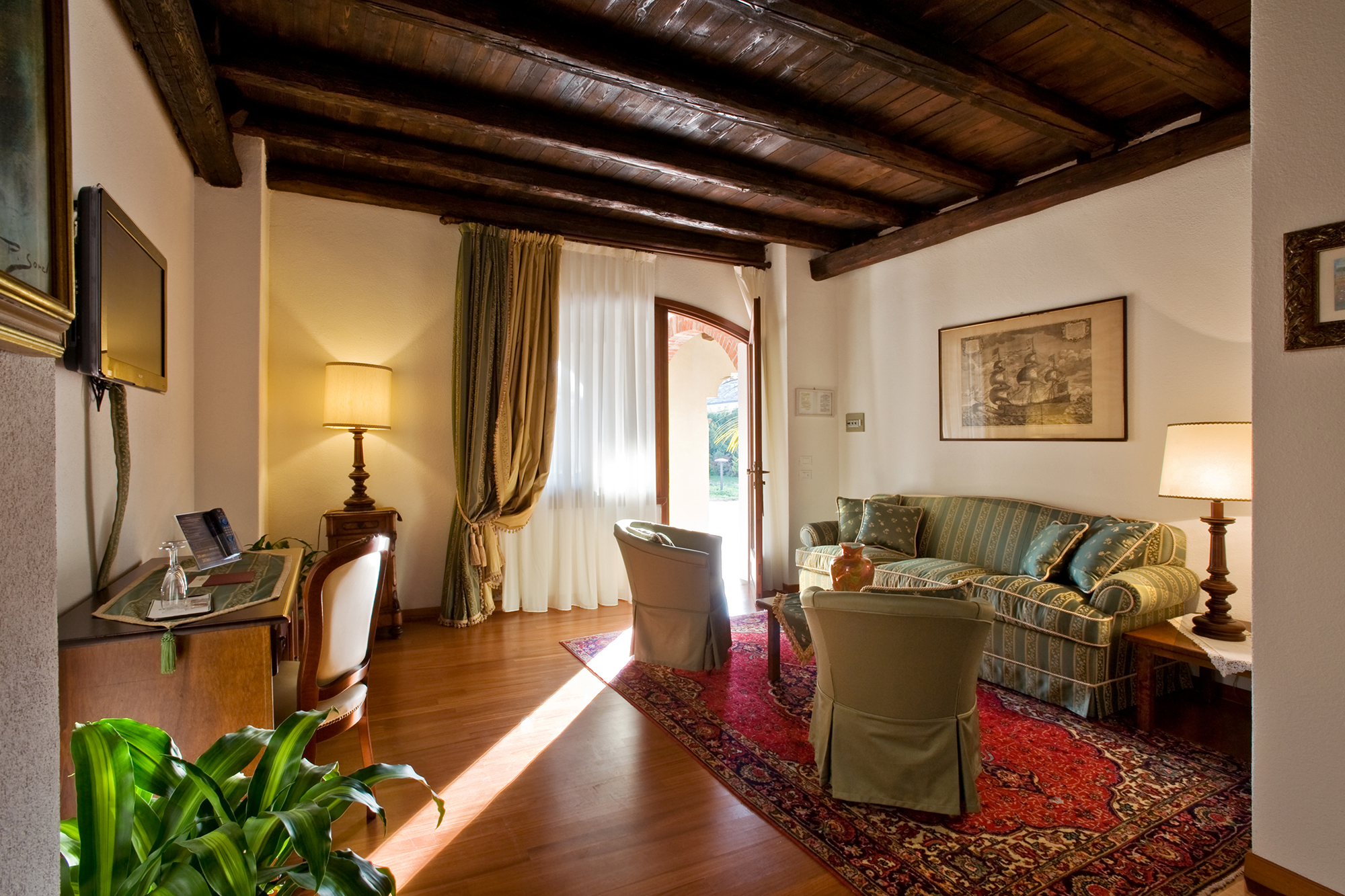
Daughter of the Venetian patrician Tomaso Condulmer, Margherita Condulmer married in 1772 to N.H. Venetian Giovanni Grassi. The latter had the family home and agricultural properties as a dowry. The Villa, according to the canons of the time, was mainly a summer residence; during the rest of the year the family resided in Venice.
Belonging to the Grassi family and completed in 1772, the same year as Giovanni and Margherita's wedding, the imposing Palazzo Grassi in Venice. Work of the architect Giorgio Massari, located in the San Marco district and overlooking the Grand Canal, it is now home to very interesting exhibitions.
Anecdotes and Curiosities
The beautiful N.D. Margherita Condulmer is remembered as a sunny and strong-willed woman, a little capricious but above all a lover of literature and art. Her friendship with the poet Isabella Teotochi Albrizzi is documented, and she is also in deep friendship with Vincenzo Monti, Ugo Foscolo and Pindemonte. It is said that on January 20, 1779 Margherita decided to retire to the monastery following her husband's refusal to grant her the services of the cicisbeo N.H. Gaetano Dolfin. Already the next day, January 21, at the insistence of her husband, Margherita was returning home.
The Cicisbeo or "Cavalier Servente" was a typical figure of the Venetian eighteenth century. Virtually every married noblewoman owned one, and the presence of the servant knight was even negotiated in the wedding contracts. These were men, not to be confused with lovers, who were in charge of the personal safety of the ladies they awaited. According to the practice, the cicisbeo went to wake up the lady in the morning, wished her good morning, served her breakfast, helped her adjust her bust. He also accompanied her on walks, to the theater, accompanied her back home, and waited for her to fall asleep ... Her suite Villa number 6 is dedicated to her.
Suite n° 7 “Alvise Condulmer”

Inevitable, among our suites, the one dedicated to the one who commissioned the construction of the Villa, the “Noble Homo Veneto” Alvise Condulmer. The Condulmer family (or Gondulmer) boasts very ancient origins, probably Lombard. Only three branches of the family belonged to the Major Council of the Republic, thus becoming part of the patrician members of the small Venetian aristocracy. Alvise Condulmer, the progenitor, belonging to the first of the three branches, was very powerful and influential at the local level; his beautiful Palazzo Loredan in Venice, where the Gondulmer foundation still stands today.
Among his most illustrious descendants, Pope Eugene IV, to whom another suite of the hotel is dedicated. In the first half of the 1700s, Alvise Condulmer commissioned the construction of the Villa in Zerman, on his landed properties in the Treviso area, on the ruins of an ancient 16th century convent. The abbreviated spelling of the Latin Nobilis Homo, or of the Venetian Nobil Homo, or "nobleman", is N. H., the female correspondent, N.D. or Nobilis Donna. The title N.H. it appeared in the ancient Republic of Venice, to distinguish the Patricians, the noble class ruling the city of Venice and the Venetian state. This title therefore referred to the holders of the sovereignty of the Venetian state, as potential successors of the Doge. In the noble hierarchy he was consequently equated to a prince of blood.
Suite n° 8 “Conti Tornielli”

The eighth suite of our hotel is dedicated to the Tornielli family. There is certain information about the Tornielli family, of Lombard origins and its progenitor Ildebrando, since the dawn of the thirteenth century. In 1536, Count Giovanni Battista Tornielli bought the Palazzo ai Servi in Venice, which has since been called Palazzo Torniello ai Servi. Towards the end of the 1700s another Giovanni Battista Tornielli inherited the Condulmer estate from the last descendant of the Grassi family, with the villa of the same name attached.
Count Giovan Battista Tornielli was president for over twenty years, from 1850 to 1872, of the Grand Theater "La Fenice" in Venice, a place of world fame. The friendship of Count Giovan Battista with the composer Giuseppe Verdi is famous, who he hosted in the Villa immediately the disappointment of the much criticized premiere of the "Traviata", staged on March 6, 1853 at the Teatro La Fenice. As evidence of the friendship between the count and the composer, one of the four frescoes in the central hall of the Villa, which portrays the same count driving a cart pulled by oxen, above which Verdi is depicted with a lute in his hand, in company of a cheerful brigade. This fresco, like the other three that still adorn the large entrance hall of the Villa, was commissioned by Giovan Battista Tornielli to the painter Eugenio Moretti Larese.
Anecdotes and Curiosities
Inaugurated in 1792, destroyed by fire twice in 1836 and recently in 1996, the Gran Teatro La Fenice was one of the most elegant theaters in Italy. Risen three times from its ashes like the mythical bird, since 2003 and after years of work, the Theater has been returned to its city and to its former glory.
The historical archive of the Teatro La Fenice, now online, preserves the material relating to almost all the operas staged. In particular, Giuseppe Verdi's scenographic sketches of his five “world premieres” are kept: Ernani; Attila; Rigoletto; The Traviata; Simon Boccanegra.
Curiosities and Particularities in The History of The Villa
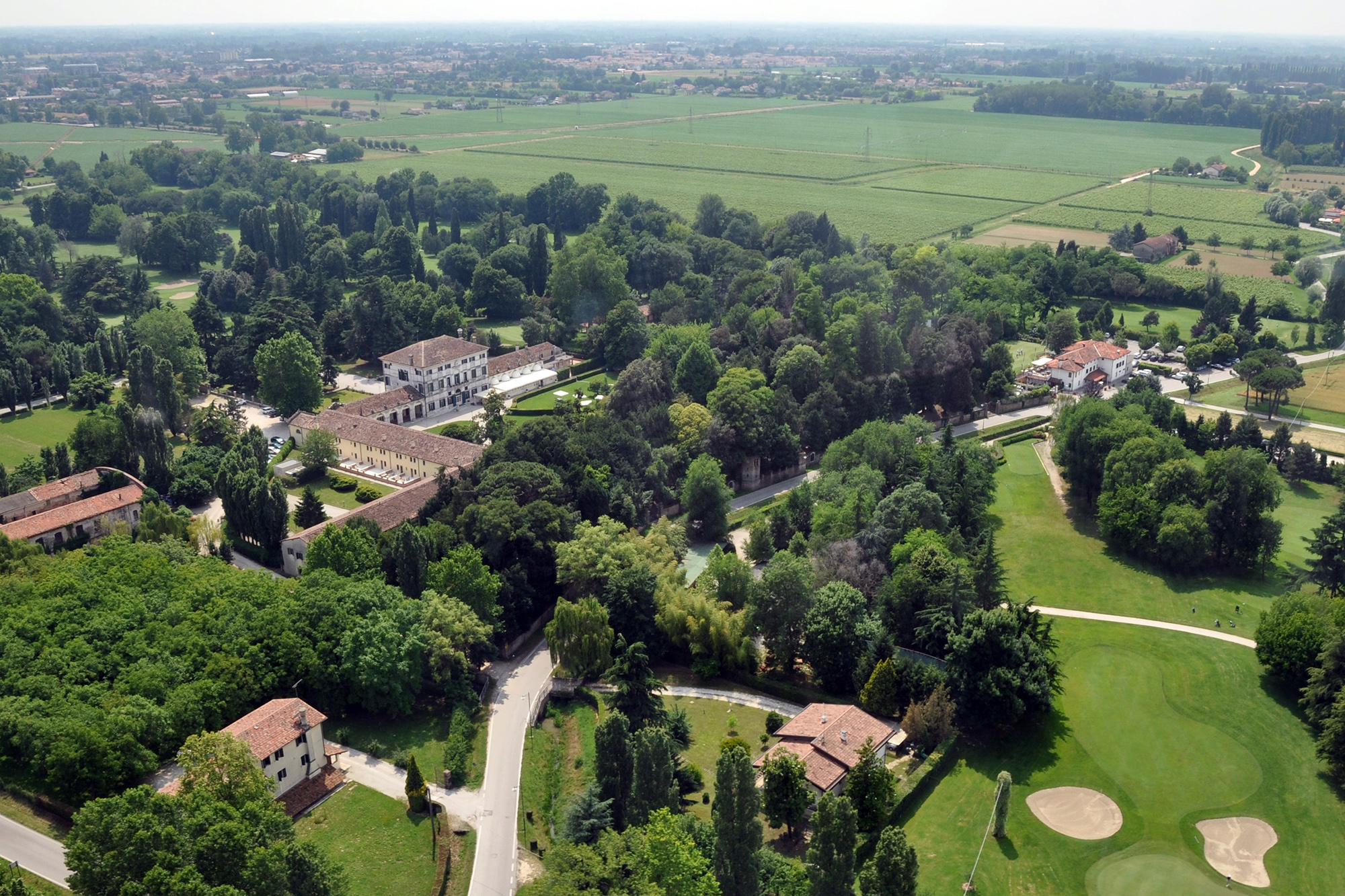
Singular and noteworthy in the history of the Villa, its succession from the last descendant of the Tornielli family, Count Arcibaldo Trevisan Tornielli, to Ildebrando Bonaventura.
On his death, Count Arcibaldo, who had never married, left the Villa and the properties of Zerman to Ildebrando Bonaventura, son of his administrator, but educated and treated as if he had been his, then in his early twenties. The singular inheritance and the beautiful personality of Ildebrando Bonaventura inspired the creation of “il signor Bonaventura”. This was born from the imagination of Sergio Tofano who met Ildebrando in the army and cultivated his friendship. The funny cartoon character appeared in the "Corriere dei Piccoli" from 1917 to the mid-1950s.
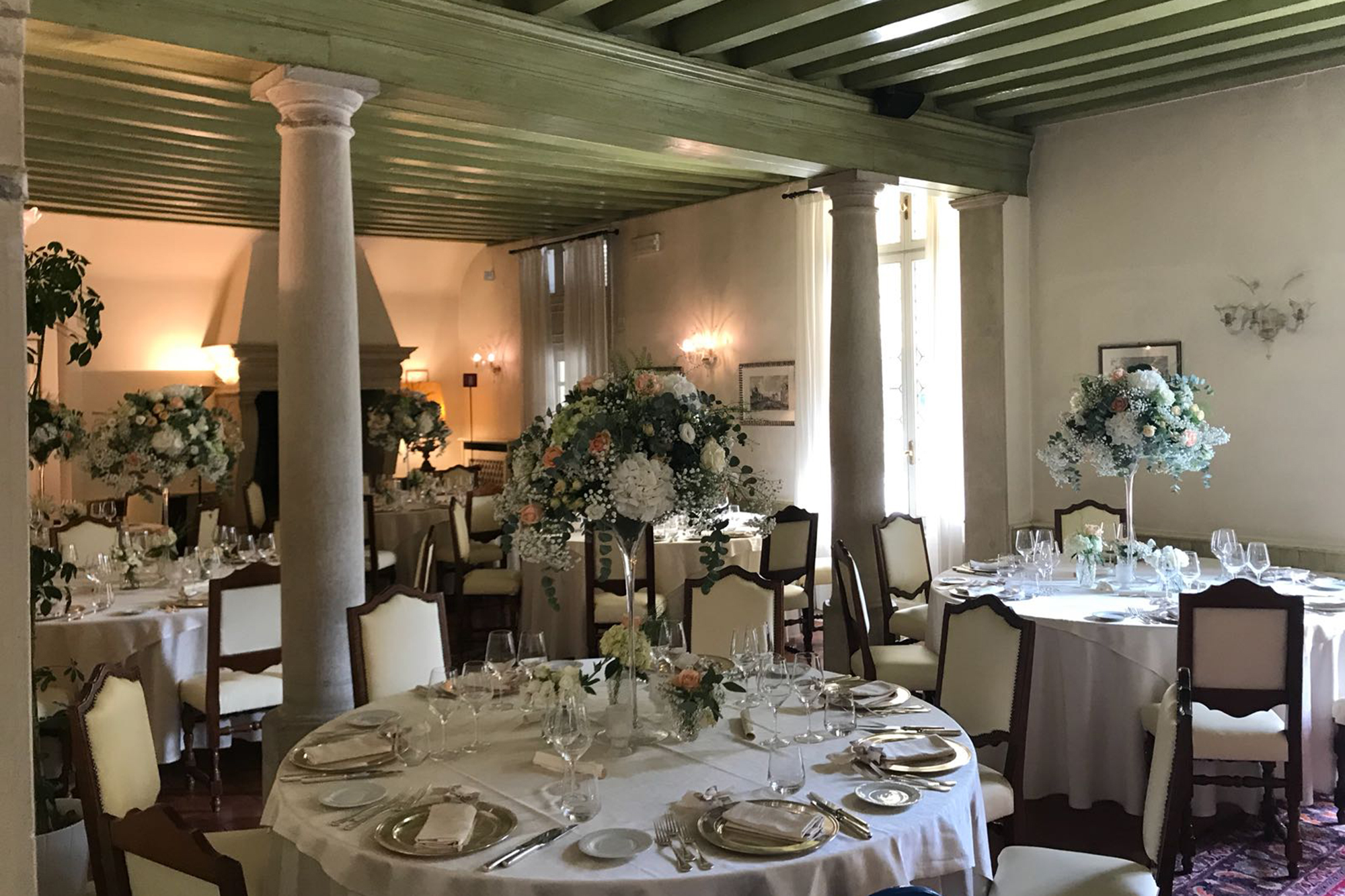
"Bonaventura" wore a tailcoat and a red bowler hat, wide white trousers, and was always accompanied by his faithful dachshund. Under your arm, at the end of each story, the inevitable check of "one million".
Finally, to get almost to the present day, it is worth noting what happened at the Villa during the Second World War. The beautiful house was confiscated first by the Germans, then by the British and finally by the Americans. Fortunately, the Villa did not suffer major damage because the Germans took care to shore up the entire main floor with sturdy beams, which held up throughout the war period. In this way the precious stuccos, frescoes, wonderful chandeliers and most of the furnishings were preserved. The only real damage was the subtraction of unpublished writings by Giuseppe Verdi, today of immeasurable value.
Birth and History of the Venetian Villas and Their Characteristics
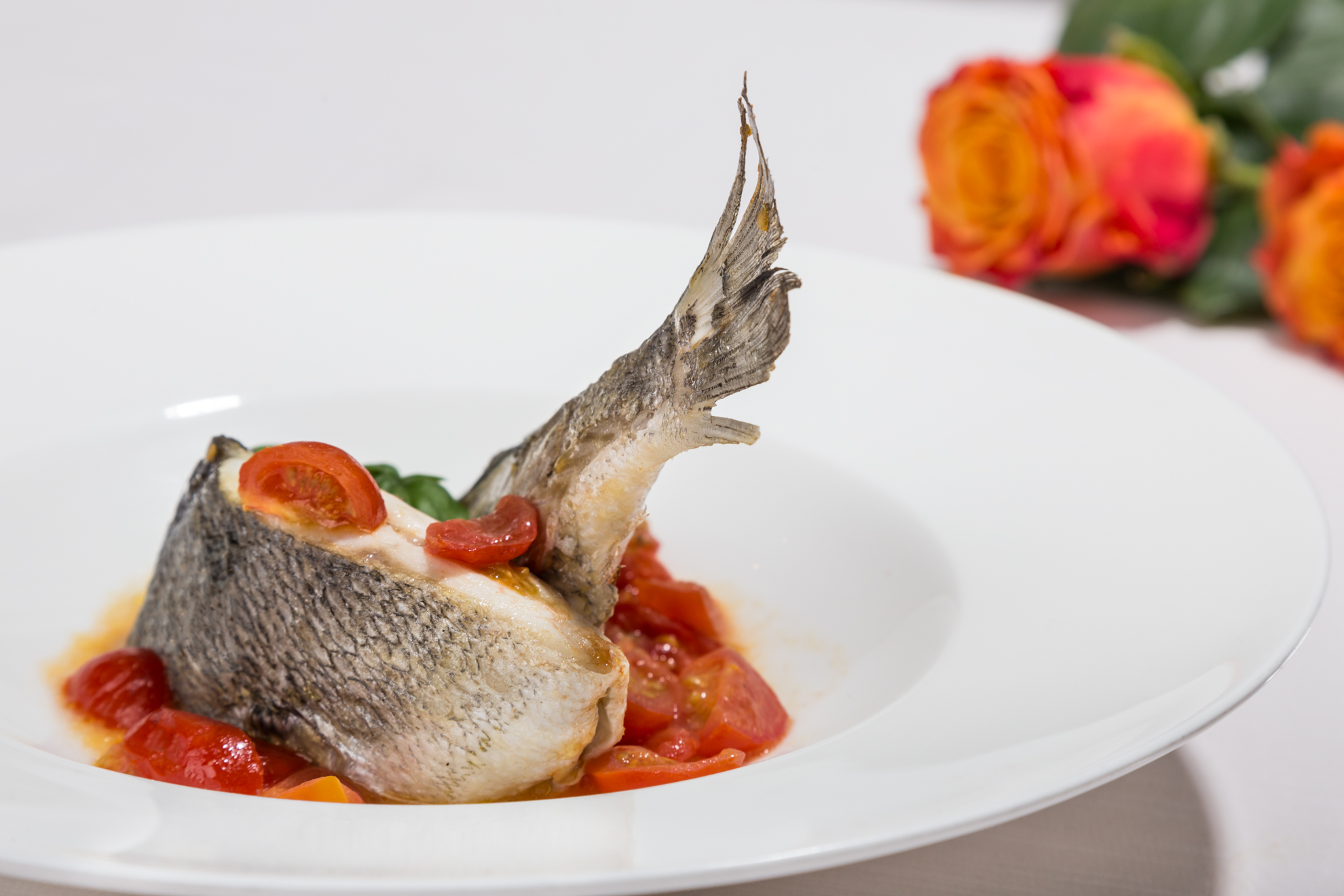
The Venetian villas are currently more than 400 historic buildings located in the seven Venetian provinces defined in the Renaissance period as "the hinterland of Venice" although we also find examples in Lombardy, Friuli Venezia Giulia and on the shores of Lake Garda.
For about 4 centuries of government of the Serenissima Republic of Venice, starting from the 15th century until the Napoleonic era, the Venetian villas arose with a great concentration in the ideal triangle between Venice, Verona and Vittorio Veneto in very different natural environments, hill , countryside, plains, all territories subject in that period of reclamation and cultivation by the Venetian republic. At the dawn of the Serenissima Republic of Venice, a law prohibited the Venetians from cultivating the land: "Cultivating the sea and lassar star la tera", in fact the Republic was linked to the sea, a seafaring power whose success was based on trade. It was feared that cultivating the land could steal labor force from trade and it was not intended to enter into conflict with adjacent feudal families such as Scaligeri and Carraresi.
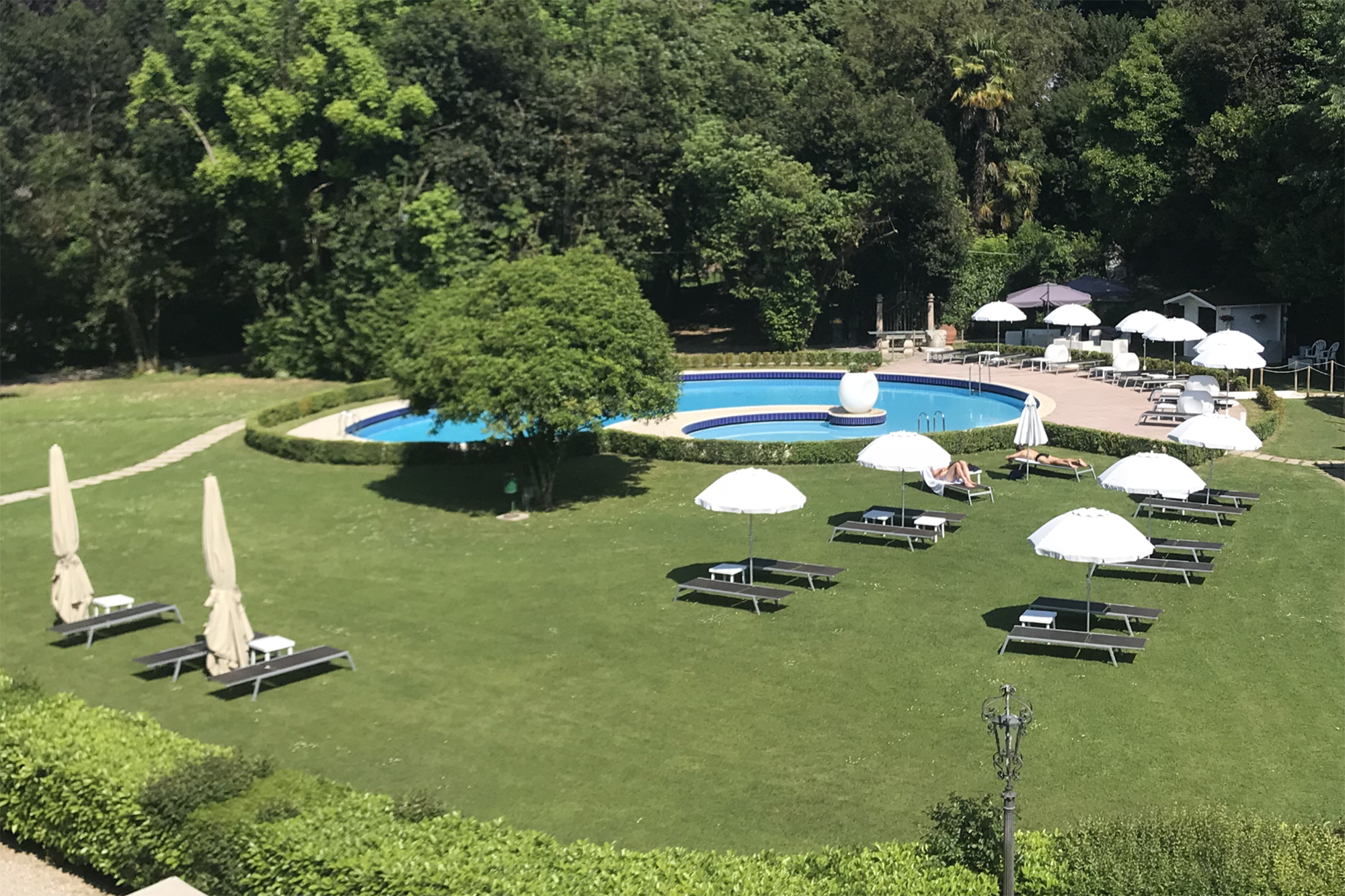
In the 14th century and in the first half of the 15th century this law was modified and it was clear to the Serenissima the importance of the land in the hinterland for agricultural and timber production for boats as well as for textile production.
In this period we have the first examples of Villa Veneta, linked to the construction of stately homes for the stay of Venetian nobles in the periods necessary for agricultural work and reclamation of the inland properties. Initially these are relatively simple constructions that overlook paved courtyards, the barns serve as granaries, stables for animals and residences for employees.
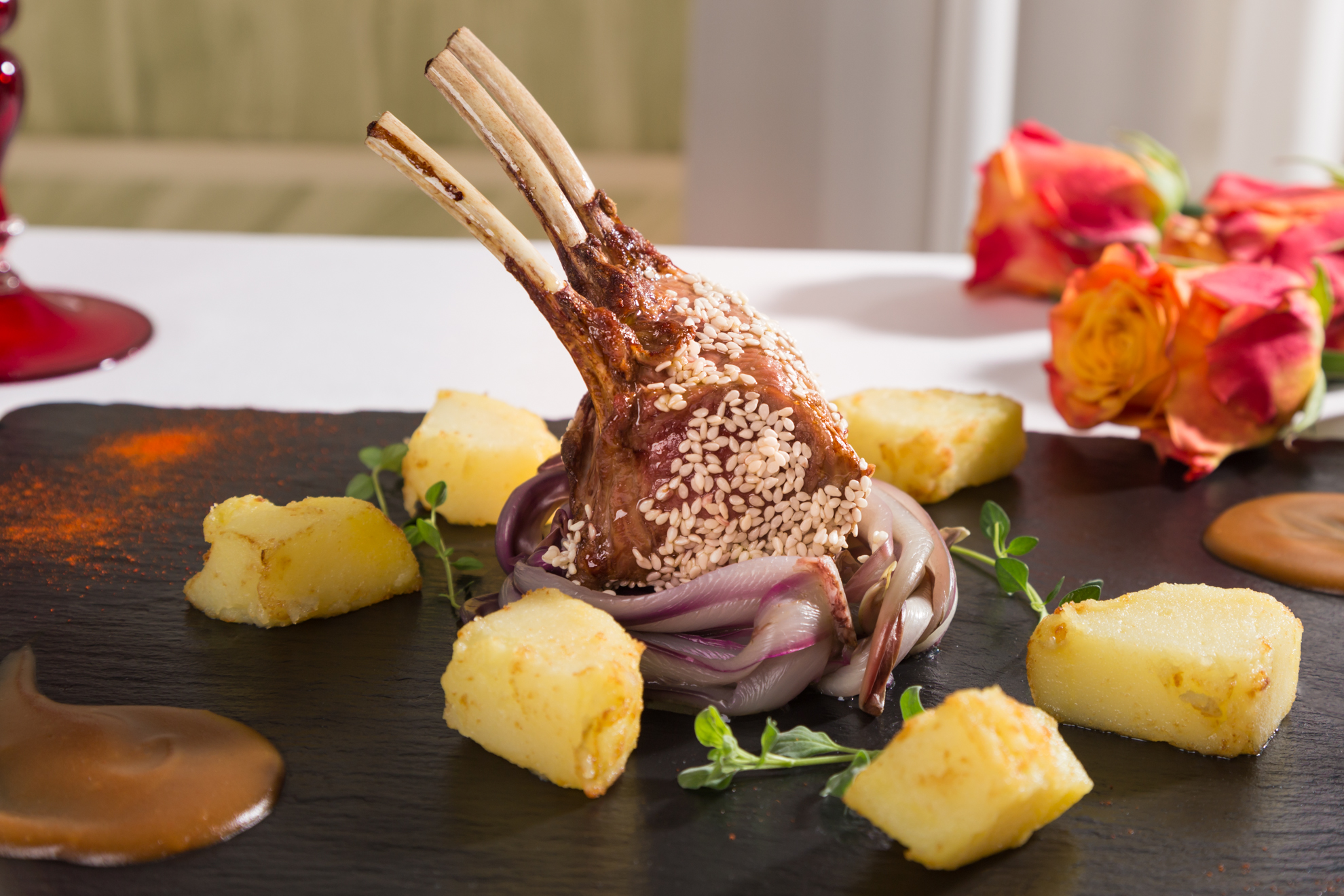
In the second half of the fifteenth century the first transformations take place: The villas are inspired by the urban palaces of Venice, often surrounded by high crenellated walls in the shape of castles, life in the villa begins to evolve: only agricultural work leaves room for idleness, to contact with nature, to reading the classics. This is where the modern term “vacation” originates.
The most representative examples of Villa Veneta, however, appear around 1700 thanks to a more favorable economic situation in the territory mainly due to the prosperity of the regulated and reclaimed land as well as to the textile industry: silk and wool mills in the hinterland produced and exported products towards the Central Europe in large quantities.
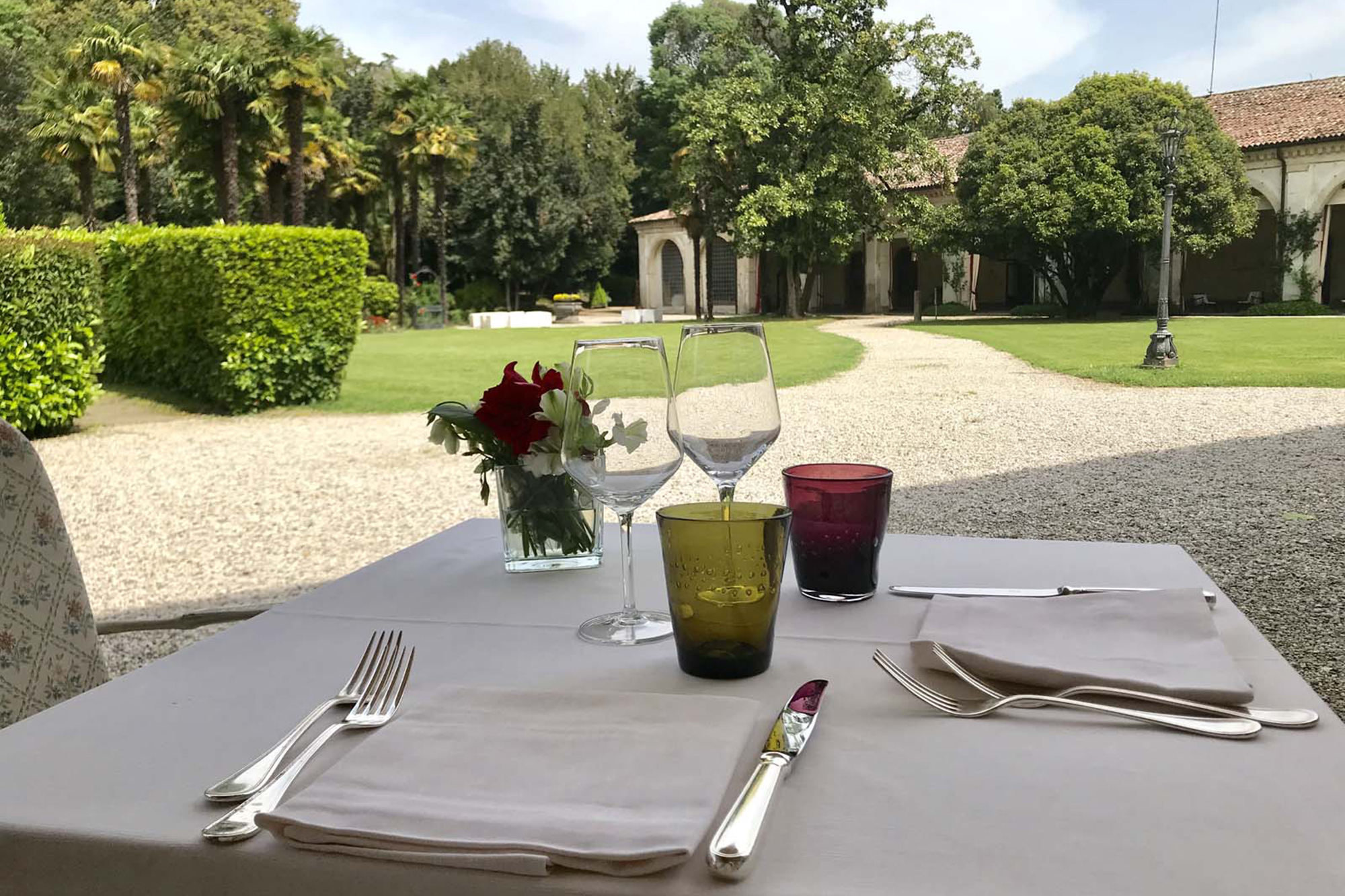
In this period there is a flourishing of princely residences with stables, guest rooms, scenic arcades and chapels, the gardens are designed by real landscape architects while inside frescoes and paintings by painters such as Tiepolo, Guardi and Canaletto embellish the walls and the halls of the villas creating timeless masterpieces. Refined cabinet-making works and decorations with majolica and ceramics from Bassano, have little to envy to masterpieces of England or Bohemia.
In this context, the villas of Palladio, a brilliant architect who influenced the architecture of Venetian villas, are famous. The Palladian villas are among the most successful and immortal examples of the concept of the Venetian Villa and heavily influenced the construction style of stately homes all over the world.
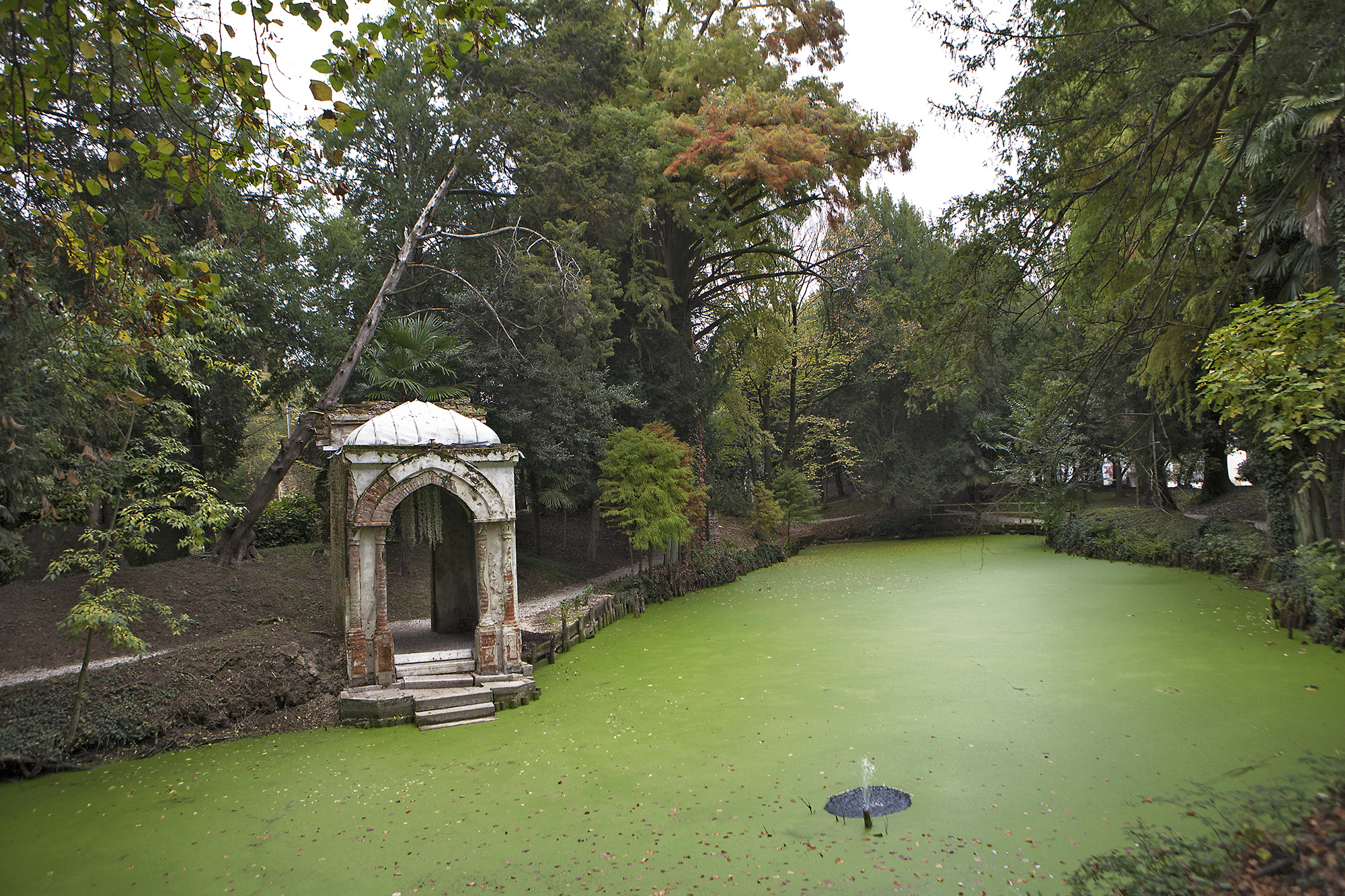
The 18th century Venetian villa (category in which Villa Condulmer falls) has very specific characteristics on a structural level. The highest, central and most important part of the architectural complex is the manor house, residence of the nobles. Here there was a central hall, the fulcrum of family life: in the hall friends and family were received, concerts were listened to and theatrical performances followed. This is the largest and richest room, frescoed by often renowned painters and enriched with fine furniture.
Next to the central part, often orthogonal, are the barns, built for agricultural needs and for the accommodation of employees. At first considered unworthy spaces, they were incorporated into the entire complex in the 1700s, joining them to the manor house according to the architectural scheme of Palladio. Above the barns there are often some towers called "dovecotes" where birds are bred. At the head of one of the barns there is often a chapel for religious worship.
Typical Barchessa Villa Veneta
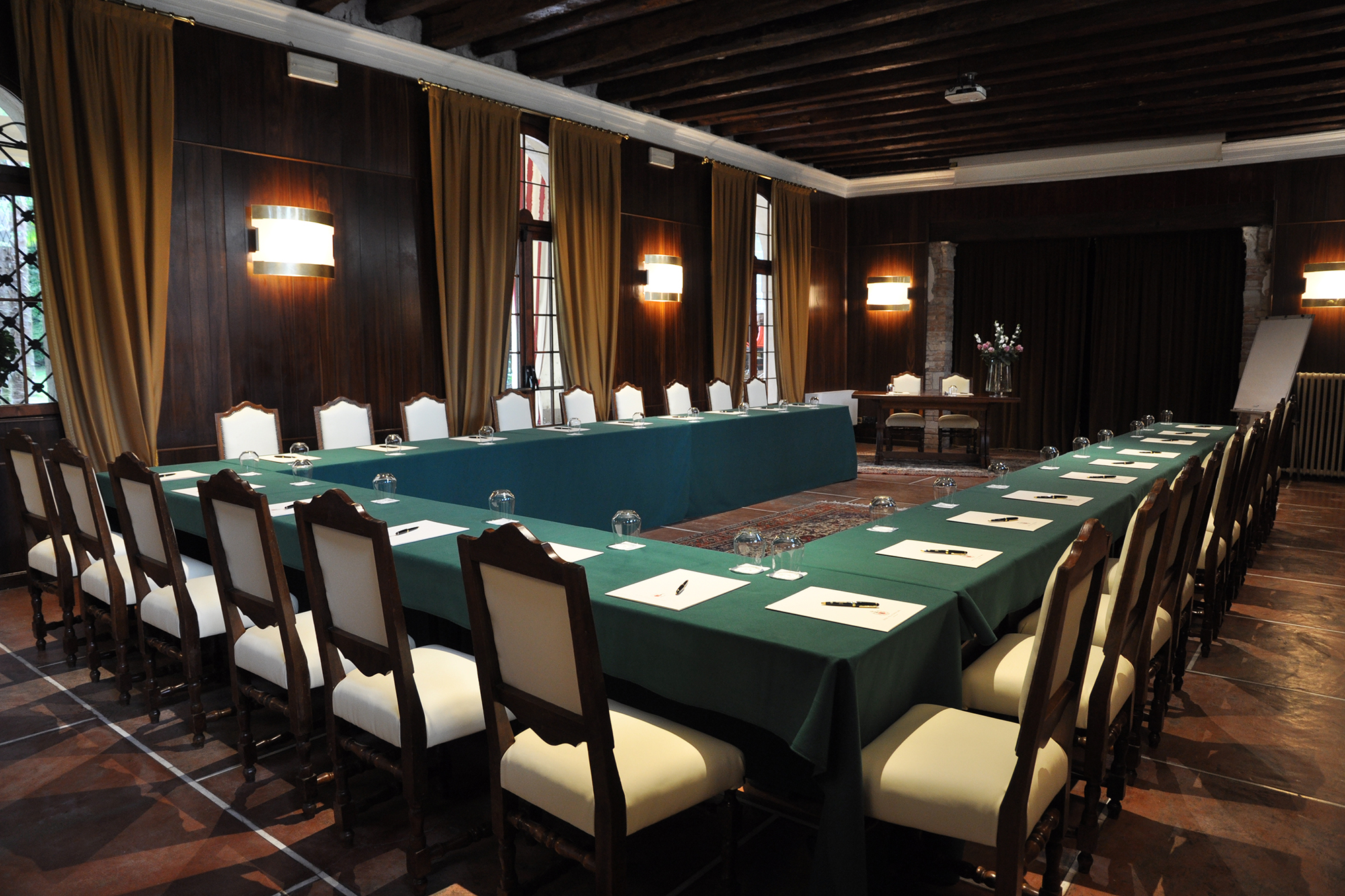
External architectural features of the Palladian or contemporary Venetian villas are the large park, the presence of fountains and other buildings such as the iceboxes, the torcolo, the maggots, elements of the park.
The park is a fundamental architectural space in the villa complex, often in this period it refers to the Italian garden and consists of long avenues in the green guarded by classical statues, fountains or fish ponds, centuries-old trees, labyrinths. Towards the end of the 1700s some gardens take on the naturalistic form of the English garden.
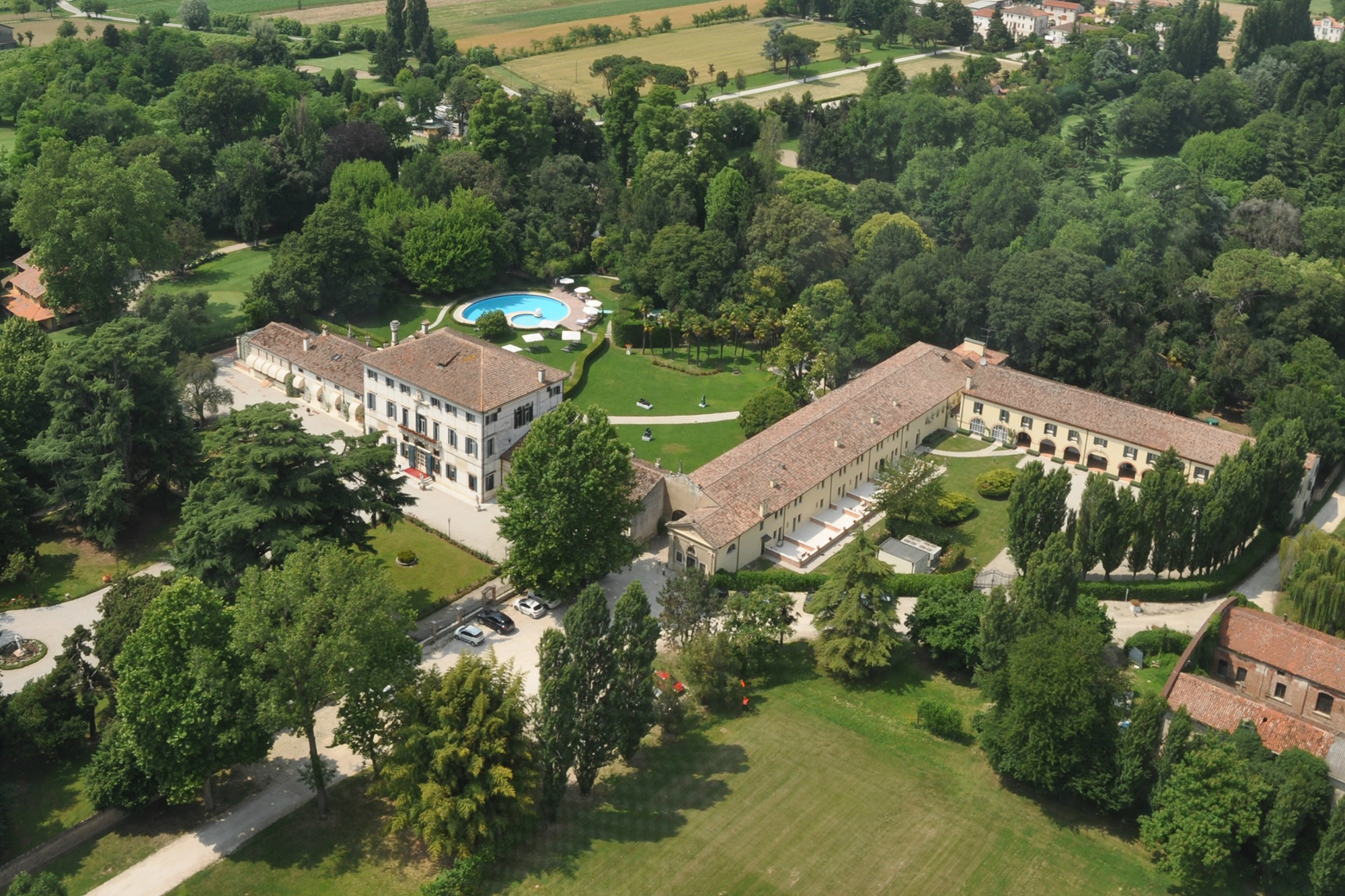
The icebox, "giasèra", is a cold and humid environment mostly underground in which ice is kept for domestic use, the roccolo was a large cage for birds present in almost all the parks of the villas, the "caneva" or cellar was used for the production or conservation of wine, the torcolo (press) was present in the park of the villas in which land was produced olive oil by pressing, the maggots were huge wooden tables sprinkled with mulberry to nourish the silkworms when cultivated.
Today the Venetian villas are protected as artistic and cultural heritage of the Veneto region, many of them are owned by the State, others are private residences of the heirs of the eighteenth-century nobles, and others are used as fascinating prestigious hotels and accommodation facilities. In any case, the Venetian villa is a priceless heritage of our region and a fundamental characteristic of its history and its cultural landscape.
Where We Are
Villa Condulmer - Via Preganziol, 1, Zerman, Mogliano Veneto (TV), 31021, Italy
Villa Condulmer
Venetian Villa of The '700 - Hotel, Resort & Golf Club

An Enchanted Place
A Venetian villa dating back to the first half of the 1700s which stands on an ancient convent of the 1500s. Since 1960 Villa Condulmer has been a 5-star hotel with a golf course, restaurant, swimming pool and American bar. Protected by the Fine Arts since 1930, it is a place of charm and absolute historical-cultural importance where Verdi wrote the definitive version of the “Traviata” on the piano, still present in the Hall. Here you can immerse yourself in history by crossing the hall and observing the signs of time painted on the frescoed walls.

Climbing the stairs at the entrance to the villa, you get lost in the huge spaces of the noble floor, from which you can see the royal suites that refer to the events of the artists from the world of music, cinema and politics who have stayed here. From Ronald Reagan, Lix Taylor, Mick Jagger to Placido Domingo and Sting to Vasco Rossi. Going up to the top floor, one imagines the great characters of our literature looking out of the windows, while looking at the park and garden that inspired those poems that have become the heritage of our present. You want to go back to the ground floor and walk through a new door to find out what else the eighteenth-century halls hide. As we leave the park, which looks like a forest with its centuries-old trees, awaits us. The fascinating architecture is reminiscent of art history books and everything refers to the typical feasts of the time with the tables set, smelling the cigar that a man smokes sitting on a wicker chair.

The luxurious hotel offers 47 rooms, including 20 classic double rooms, 12 executive junior suites, 7 garden suites and 8 historic suites. A restaurant with 230 indoor seats and an outdoor summer restaurant with 600 seats. In addition to the centuries-old park with lake and 16th-century ruins, the swimming pool open from 1 June open until September and the 18-hole + 9-hole golf club and club house. The services also include the heliport and spaces for events such as meetings, conferences and ceremonies.
Architecture and The Park

According to the dictates of the Venetian Villas of the eighteenth century, which sees the most grandiose examples of villas, clients and wealthy families, it is the representative space that is privileged, with the stately building preceded by the garden in an axial configuration. The main entrance, located on the eastern side at the end of an avenue, is characterized by a wrought iron gate with exposed brick pillars and ashlar finishes, all decorated with statues.

Following the driveway, after the central statue surrounded by a flower bed, the two monumental centuries-old trees represented by the Atlas cedar on the left and the Lebanese cedar on the right. The two majestic plants adorn the entrance to the stately building, which faces south on its main front, despite the fact that the two facades are identical to each other.

The ground floor is slightly raised, with four steps leading to the entrance, after which the visitor is welcomed by the large passing hall, the fulcrum of the building. The flooring is in Venetian terrazzo; walls and ceiling are adorned with valuable stuccoes; the two ancient and rare handmade Murano glass chandeliers are symmetrical and majestic. Also in the hall, you can admire 4 bucolic-themed frescoes, made around the mid-19th century by the painter Eugenio Moretti Larese. In particular, the second on the right, portrays the then owner of the Villa, Count Giovan Battista Tornielli, together with his friend Giuseppe Verdi. The composer at the invitation of the count, stayed in the Villa from March 1853, to relax after the much criticized “prima” of La Traviata.

In the central part of the hall a large arched door is flanked by a window on each side. Going up the stairs, symmetrical to each other, you arrive at the main floor, also characterized by a large living room with a Venetian terrazzo floor, an imposing majestic eighteenth-century Murano glass chandelier in the center of a valuable noble coat of arms, a protruding terrace, and a remarkable verticality.

The pride of the Villa is the large eighteenth-century park designed by the architect Sebatoni, where it is easy to relax in peaceful walks in the quiet. There are numerous imposing and rare trees, cataloged as monumental and secular. In particular, at the edge of the pond, the rare specimens of Cypress of the Marshes. Of particular interest is the small pavilion overlooking the lake, the statues, the ruins, the numerous flowers and essences typical of centuries-old parks; finally, the large and beautiful swimming pool surrounded by greenery. Adjacent to the park of the villa, an eighteenth-century chapel, currently deconsecrated.
The Hotel and The Historic Villa Suites

Over the years the hotel has acquired international fame, so much so that not a few celebrities of music, cinema or politics have stayed in the suites, some of which, the eight historic rooms of the central body of the Villa, are named after them. Among the prominent guests there are, in addition to the composer Giuseppe Verdi, who stayed at the time of Count Giovan Battista Tornielli, personalities of the caliber of Ronald Reagan, Liz Taylor, Richard Burton, Mick Jagger, Placido Domingo, Sting and many others. .
Suite n° 1 “Giuseppe Verdi”

A suite dedicated to Giuseppe Verdi, the composer of Nabucco, Rigoletto, Traviata, Aida, Otello, Giovanna d'Arco, Macbeth and much more is unmissable. The composer was deeply attached to the Villa and to Count Tornielli. Giuseppe Verdi's stay at Villa Condulmer was due to a failure. On March 6, 1853, the premiere of one of his most famous works was staged at the Teatro La Fenice in Venice: La Traviata. But it was heavily booed by the audience in the room, resulting in the author's disappointment and dejection. The president of the theater at that time was Count Giovanni Battista Tornielli, who had inherited Villa Condulmer and the Zerman estate from the last descendant of the Grassi family. A great lover of music and tied to Verdi by sincere friendship, the count invited the composer to stay with him in the Villa, far from the usual environments.
Right on the piano of Villa Condulmer, still present in the Villa, the Traviata was revised and rewritten by its author to become the famous timeless success we know today. Of Giuseppe Verdi's stay in the Villa, in addition to the aforementioned piano, there remains the beautiful fresco commissioned by Count Tornielli to the painter Eugenio Moretti Larese, depicting the same count driving a cart pulled by oxen and on which Verdi sits in the act of playing a lute, in the midst of a cheerful brigade. The other three beautiful frescoes that dominate the entrance hall of the Villa are by the same author.
Anecdotes and Curiosities
It is said that the very night in which Verdi arrived near the Villa, where he would have found refuge and tranquility after the failure of his premiere at the theater, he was the victim of an accident: the carriage on which he was traveling went off the road, and the horses and passengers were ruined. in the lateral moat. Giuseppe Verdi (1813 - 1901) was an Italian composer universally recognized among the greatest opera players, author of melodramas that are part of the repertoire of theaters all over the world. He dominated the opera scene after the great protagonists of the early nineteenth century.
Suite n° 2 “Liz Taylor”

Suite No. 2 of the Villa is named after the beautiful Elizabeth Taylor, in memory of her stay that had the diva of “The Taming of the Shrew” and “Cleopatra”, a guest in her Villa together with her famous husband, Richard Burton. Winner of 2 Oscars for Best Actress, in 1961 for "Venus in Mink" and in 1967 for "Who's Afraid of Virginia Woolf," Taylor is still considered one of the most beautiful and talented actresses in the history of cinema.
Anecdotes and Curiosities
Elisabeth Taylor and Richard Burton's stay in the Villa took place during the filming of the film "The Taming of the Shrew", which arrived in theaters in March 1967. During the making of the film, the two actors decided to take a sudden break of three months during the which traveled a lot. Among their goals, they chose to spend a whole week at the Hotel Villa Condulmer. There is evidence of their confidential presence from the family of the then upholsterer of the Villa, Cav. Giuseppe Barbon, who was ordered a table habillè for the occasion.
Suite n° 3 "Artists' Suite"

Suite No. 3 of the Villa is dedicated to all the artists who have frequented Villa Condulmer, attracted both by the prestigious "Condulmer Recording Studio" adjacent to the hotel, and by the extraordinary quiet that reigns in the Villa. The peace and tranquility that we normally breathe, have repeatedly put artists in a position to find inspiration for their works.
Among the most famous artists who recorded at Studio Condulmer and who stayed in the Villa: Placido Domingo and Katia Ricciarelli; but also the Duran Duran, Sting, Sade, Mick Jagger, as well as Gino Paoli, Ornella Vanoni, the Poohs, Paolo Conte, Claudio Baglioni, Renato Zero, Umberto Tozzi, Tiziano Ferro, Zucchero, Vasco Rossi, and many others enrich the parterre of our most famous clientele.
Anecdotes and Curiosities
Adjacent to the Villa from 1985 to 2009 was the "Condulmer Recording Studio". Most of the artists who recorded their music in the studio were also guests of the Villa, some for a few nights, some for long periods. Tranquility and peace, characteristics of the Villa, constituted an optimal mix for authors, composers and singers. Zucchero Fornaciari, affectionate guest of the Villa, had his most significant presence in 1985 when, together with the actor Gérard Depardieu, he recorded "A little help". The entire clip, with the two leading artists, was shot between the Villa and the Studio. Vasco Rossi chose to stop more than once in the quiet of the Zerman countryside and his famous 1993 hit "Vivere" was composed in one of the garden wing suites.
Gino Paoli stayed in the Villa in 1991 during the recording of his famous song "Four friends at the bar". The song, which was inspired by Vasco Rossi's musical style and represented a decisive stylistic change of the artist, was a huge success and won that year's Festivalbar. Sade Adu in 1992, after the album "Stronger than Pride" and four years of silence, finally resumed recording and did it right in the Condulmer Studio, with the song "Love Deluxe". He stayed in the Villa during that period, "running away from the usual annoyances", as he explained to Repubblica journalists during the interview. Sir Mick Jagger, leader of the legendary Rolling Stones, stayed in the Villa with his wife Jarry Hall, during the early nineties.
Suite n° 4 “Ronald Reagan”
Suite number 4 of the Hotel is named after Ronald Reagan. In 1987, the then American president went to Italy to attend the G7 which that year was held in Venice, on the island of San Giorgio. On Wednesday 3 June 1987 at 10:15 pm, American President Ronald Reagan and his wife Nancy landed at Venice's Marco Polo airport. Here a helicopter awaited them to take them to the historic hotel.
The strategic position, the tranquility and silence, and last but not least the possibility of doing sports and walking in the park, as requested by the President, made the Villa an excellent headquarters. For the occasion, the Hotel Villa Condulmer was surrounded by a police cordon to ensure the safety and security of the then most important president in the world.
Anecdotes and Curiosities
A lot of work was done in the hotel on that occasion to meet the requests of the President and his large staff. Nancy loved red roses, while a couple of excellent horses were at the President's total disposal in the adjacent stables. The Reagan's rooms were enriched with precious furniture and paintings, although at the last moment Mrs Reagan decided that they would not sleep, according to plan, in separate rooms.
In a hurry they then brought the double bed used in the White House from Washington: a large chest of drawers with a blue bedspread, to which, thanks to the antique dealers of the nearby city of Treviso, a 15th-century headboard was added. Also thanks to them, the room was also enriched by a 17th century Annunciation, two 16th century stone capitals on the sides of the bed as bedside tables and a large 18th century gilded mirror. The photo of the Presidential Couple with a dedication to the property is exhibited in the green sitting room next to the central hall (Hall).
Suite n° 5 “Pope Eugenio IV”

The most illustrious ancestor of Alvise Condulmer, the Venetian patrician who commissioned the construction of the Villa, is certainly Gabriele Condulmer, better known as Pope Eugene IV. He was born in Venice in 1383. He was the 207th Pope of the Catholic Church, until his death in 1447.
Pope Eugene IV is remembered for having been put on the run from Rome by the powerful Colonna family who, thanks to the intercession of Pope Martin V, born Ottone Colonna and predecessor of Eugene IV, had cleverly stolen large quantities of land, through the Church. Catholic, in favor of various members belonging to his family. Pope Eugene IV, during his pontificate, had then confiscated these assets. The Colonna family retaliated by removing the dominion over Rome from Eugenio. The pope saved himself by going into exile in May 1434. Disguised in monk's clothes and taken to a Florentine vessel on the Tiber, he secretly reached Florence, where he was rehabilitated with the help of Cosimo De 'Medici. Only after ten years of exile, which also saw him in Venice and Bologna, did Pope Eugene IV regain possession of Rome. He is described by historians as averse to heresy, against slavery in the Canary Islands, of great goodness towards the poor. Never guilty of nepotism, he was a lover of art and study. Our suite n ° 5 is dedicated to him.
Suite n° 6 “Margherita Condulmer”

Daughter of the Venetian patrician Tomaso Condulmer, Margherita Condulmer married in 1772 to N.H. Venetian Giovanni Grassi. The latter had the family home and agricultural properties as a dowry. The Villa, according to the canons of the time, was mainly a summer residence; during the rest of the year the family resided in Venice.
Belonging to the Grassi family and completed in 1772, the same year as Giovanni and Margherita's wedding, the imposing Palazzo Grassi in Venice. Work of the architect Giorgio Massari, located in the San Marco district and overlooking the Grand Canal, it is now home to very interesting exhibitions.
Anecdotes and Curiosities
The beautiful N.D. Margherita Condulmer is remembered as a sunny and strong-willed woman, a little capricious but above all a lover of literature and art. Her friendship with the poet Isabella Teotochi Albrizzi is documented, and she is also in deep friendship with Vincenzo Monti, Ugo Foscolo and Pindemonte. It is said that on January 20, 1779 Margherita decided to retire to the monastery following her husband's refusal to grant her the services of the cicisbeo N.H. Gaetano Dolfin. Already the next day, January 21, at the insistence of her husband, Margherita was returning home.
The Cicisbeo or "Cavalier Servente" was a typical figure of the Venetian eighteenth century. Virtually every married noblewoman owned one, and the presence of the servant knight was even negotiated in the wedding contracts. These were men, not to be confused with lovers, who were in charge of the personal safety of the ladies they awaited. According to the practice, the cicisbeo went to wake up the lady in the morning, wished her good morning, served her breakfast, helped her adjust her bust. He also accompanied her on walks, to the theater, accompanied her back home, and waited for her to fall asleep ... Her suite Villa number 6 is dedicated to her.
Suite n° 7 “Alvise Condulmer”

Inevitable, among our suites, the one dedicated to the one who commissioned the construction of the Villa, the “Noble Homo Veneto” Alvise Condulmer. The Condulmer family (or Gondulmer) boasts very ancient origins, probably Lombard. Only three branches of the family belonged to the Major Council of the Republic, thus becoming part of the patrician members of the small Venetian aristocracy. Alvise Condulmer, the progenitor, belonging to the first of the three branches, was very powerful and influential at the local level; his beautiful Palazzo Loredan in Venice, where the Gondulmer foundation still stands today.
Among his most illustrious descendants, Pope Eugene IV, to whom another suite of the hotel is dedicated. In the first half of the 1700s, Alvise Condulmer commissioned the construction of the Villa in Zerman, on his landed properties in the Treviso area, on the ruins of an ancient 16th century convent. The abbreviated spelling of the Latin Nobilis Homo, or of the Venetian Nobil Homo, or "nobleman", is N. H., the female correspondent, N.D. or Nobilis Donna. The title N.H. it appeared in the ancient Republic of Venice, to distinguish the Patricians, the noble class ruling the city of Venice and the Venetian state. This title therefore referred to the holders of the sovereignty of the Venetian state, as potential successors of the Doge. In the noble hierarchy he was consequently equated to a prince of blood.
Suite n° 8 “Conti Tornielli”

The eighth suite of our hotel is dedicated to the Tornielli family. There is certain information about the Tornielli family, of Lombard origins and its progenitor Ildebrando, since the dawn of the thirteenth century. In 1536, Count Giovanni Battista Tornielli bought the Palazzo ai Servi in Venice, which has since been called Palazzo Torniello ai Servi. Towards the end of the 1700s another Giovanni Battista Tornielli inherited the Condulmer estate from the last descendant of the Grassi family, with the villa of the same name attached.
Count Giovan Battista Tornielli was president for over twenty years, from 1850 to 1872, of the Grand Theater "La Fenice" in Venice, a place of world fame. The friendship of Count Giovan Battista with the composer Giuseppe Verdi is famous, who he hosted in the Villa immediately the disappointment of the much criticized premiere of the "Traviata", staged on March 6, 1853 at the Teatro La Fenice. As evidence of the friendship between the count and the composer, one of the four frescoes in the central hall of the Villa, which portrays the same count driving a cart pulled by oxen, above which Verdi is depicted with a lute in his hand, in company of a cheerful brigade. This fresco, like the other three that still adorn the large entrance hall of the Villa, was commissioned by Giovan Battista Tornielli to the painter Eugenio Moretti Larese.
Anecdotes and Curiosities
Inaugurated in 1792, destroyed by fire twice in 1836 and recently in 1996, the Gran Teatro La Fenice was one of the most elegant theaters in Italy. Risen three times from its ashes like the mythical bird, since 2003 and after years of work, the Theater has been returned to its city and to its former glory.
The historical archive of the Teatro La Fenice, now online, preserves the material relating to almost all the operas staged. In particular, Giuseppe Verdi's scenographic sketches of his five “world premieres” are kept: Ernani; Attila; Rigoletto; The Traviata; Simon Boccanegra.
Curiosities and Particularities in The History of The Villa

Singular and noteworthy in the history of the Villa, its succession from the last descendant of the Tornielli family, Count Arcibaldo Trevisan Tornielli, to Ildebrando Bonaventura.
On his death, Count Arcibaldo, who had never married, left the Villa and the properties of Zerman to Ildebrando Bonaventura, son of his administrator, but educated and treated as if he had been his, then in his early twenties. The singular inheritance and the beautiful personality of Ildebrando Bonaventura inspired the creation of “il signor Bonaventura”. This was born from the imagination of Sergio Tofano who met Ildebrando in the army and cultivated his friendship. The funny cartoon character appeared in the "Corriere dei Piccoli" from 1917 to the mid-1950s.

"Bonaventura" wore a tailcoat and a red bowler hat, wide white trousers, and was always accompanied by his faithful dachshund. Under your arm, at the end of each story, the inevitable check of "one million".
Finally, to get almost to the present day, it is worth noting what happened at the Villa during the Second World War. The beautiful house was confiscated first by the Germans, then by the British and finally by the Americans. Fortunately, the Villa did not suffer major damage because the Germans took care to shore up the entire main floor with sturdy beams, which held up throughout the war period. In this way the precious stuccos, frescoes, wonderful chandeliers and most of the furnishings were preserved. The only real damage was the subtraction of unpublished writings by Giuseppe Verdi, today of immeasurable value.
Birth and History of the Venetian Villas and Their Characteristics

The Venetian villas are currently more than 400 historic buildings located in the seven Venetian provinces defined in the Renaissance period as "the hinterland of Venice" although we also find examples in Lombardy, Friuli Venezia Giulia and on the shores of Lake Garda.
For about 4 centuries of government of the Serenissima Republic of Venice, starting from the 15th century until the Napoleonic era, the Venetian villas arose with a great concentration in the ideal triangle between Venice, Verona and Vittorio Veneto in very different natural environments, hill , countryside, plains, all territories subject in that period of reclamation and cultivation by the Venetian republic. At the dawn of the Serenissima Republic of Venice, a law prohibited the Venetians from cultivating the land: "Cultivating the sea and lassar star la tera", in fact the Republic was linked to the sea, a seafaring power whose success was based on trade. It was feared that cultivating the land could steal labor force from trade and it was not intended to enter into conflict with adjacent feudal families such as Scaligeri and Carraresi.

In the 14th century and in the first half of the 15th century this law was modified and it was clear to the Serenissima the importance of the land in the hinterland for agricultural and timber production for boats as well as for textile production.
In this period we have the first examples of Villa Veneta, linked to the construction of stately homes for the stay of Venetian nobles in the periods necessary for agricultural work and reclamation of the inland properties. Initially these are relatively simple constructions that overlook paved courtyards, the barns serve as granaries, stables for animals and residences for employees.

In the second half of the fifteenth century the first transformations take place: The villas are inspired by the urban palaces of Venice, often surrounded by high crenellated walls in the shape of castles, life in the villa begins to evolve: only agricultural work leaves room for idleness, to contact with nature, to reading the classics. This is where the modern term “vacation” originates.
The most representative examples of Villa Veneta, however, appear around 1700 thanks to a more favorable economic situation in the territory mainly due to the prosperity of the regulated and reclaimed land as well as to the textile industry: silk and wool mills in the hinterland produced and exported products towards the Central Europe in large quantities.

In this period there is a flourishing of princely residences with stables, guest rooms, scenic arcades and chapels, the gardens are designed by real landscape architects while inside frescoes and paintings by painters such as Tiepolo, Guardi and Canaletto embellish the walls and the halls of the villas creating timeless masterpieces. Refined cabinet-making works and decorations with majolica and ceramics from Bassano, have little to envy to masterpieces of England or Bohemia.
In this context, the villas of Palladio, a brilliant architect who influenced the architecture of Venetian villas, are famous. The Palladian villas are among the most successful and immortal examples of the concept of the Venetian Villa and heavily influenced the construction style of stately homes all over the world.

The 18th century Venetian villa (category in which Villa Condulmer falls) has very specific characteristics on a structural level. The highest, central and most important part of the architectural complex is the manor house, residence of the nobles. Here there was a central hall, the fulcrum of family life: in the hall friends and family were received, concerts were listened to and theatrical performances followed. This is the largest and richest room, frescoed by often renowned painters and enriched with fine furniture.
Next to the central part, often orthogonal, are the barns, built for agricultural needs and for the accommodation of employees. At first considered unworthy spaces, they were incorporated into the entire complex in the 1700s, joining them to the manor house according to the architectural scheme of Palladio. Above the barns there are often some towers called "dovecotes" where birds are bred. At the head of one of the barns there is often a chapel for religious worship.
Typical Barchessa Villa Veneta

External architectural features of the Palladian or contemporary Venetian villas are the large park, the presence of fountains and other buildings such as the iceboxes, the torcolo, the maggots, elements of the park.
The park is a fundamental architectural space in the villa complex, often in this period it refers to the Italian garden and consists of long avenues in the green guarded by classical statues, fountains or fish ponds, centuries-old trees, labyrinths. Towards the end of the 1700s some gardens take on the naturalistic form of the English garden.

The icebox, "giasèra", is a cold and humid environment mostly underground in which ice is kept for domestic use, the roccolo was a large cage for birds present in almost all the parks of the villas, the "caneva" or cellar was used for the production or conservation of wine, the torcolo (press) was present in the park of the villas in which land was produced olive oil by pressing, the maggots were huge wooden tables sprinkled with mulberry to nourish the silkworms when cultivated.
Today the Venetian villas are protected as artistic and cultural heritage of the Veneto region, many of them are owned by the State, others are private residences of the heirs of the eighteenth-century nobles, and others are used as fascinating prestigious hotels and accommodation facilities. In any case, the Venetian villa is a priceless heritage of our region and a fundamental characteristic of its history and its cultural landscape.
Where We Are
Villa Condulmer - Via Preganziol, 1, Zerman, Mogliano Veneto (TV), 31021, Italy
-
Villa Condulmer - Infinite Exclusive Luxury & Golf - Executive Suite - 6 Days...
A Venetian villa dating back to the first half of the 1700s which stands on an ancient convent of the 1500s. Since 1960 Villa Condulmer has been a 5-star hotel with a golf course, restaurant, swimming pool and American bar. Protected by the Fine Arts since 1930, it is a place of charm and absolute historical-cultural importance where Verdi wrote the...
2 730,00 € -
Villa Condulmer - Discovering Prosecco & Golf - Executive Suite - 5 Days 4...
A Venetian villa dating back to the first half of the 1700s which stands on an ancient convent of the 1500s. Since 1960 Villa Condulmer has been a 5-star hotel with a golf course, restaurant, swimming pool and American bar. Protected by the Fine Arts since 1930, it is a place of charm and absolute historical-cultural importance where Verdi wrote the...
1 490,00 € -
Villa Condulmer - Infinite Exclusive Luxury & Golf - Executive Suite - 5 Days...
A Venetian villa dating back to the first half of the 1700s which stands on an ancient convent of the 1500s. Since 1960 Villa Condulmer has been a 5-star hotel with a golf course, restaurant, swimming pool and American bar. Protected by the Fine Arts since 1930, it is a place of charm and absolute historical-cultural importance where Verdi wrote the...
2 515,00 € -
Villa Condulmer - Discovering Prosecco & Golf - Executive Suite - 4 Days 3...
A Venetian villa dating back to the first half of the 1700s which stands on an ancient convent of the 1500s. Since 1960 Villa Condulmer has been a 5-star hotel with a golf course, restaurant, swimming pool and American bar. Protected by the Fine Arts since 1930, it is a place of charm and absolute historical-cultural importance where Verdi wrote the...
1 275,00 € -
Villa Condulmer - Infinite Exclusive Luxury & Golf - Executive Suite - 4 Days...
A Venetian villa dating back to the first half of the 1700s which stands on an ancient convent of the 1500s. Since 1960 Villa Condulmer has been a 5-star hotel with a golf course, restaurant, swimming pool and American bar. Protected by the Fine Arts since 1930, it is a place of charm and absolute historical-cultural importance where Verdi wrote the...
2 300,00 € -
Villa Condulmer - Discovering Prosecco & Golf - Executive Suite - 3 Days 2...
A Venetian villa dating back to the first half of the 1700s which stands on an ancient convent of the 1500s. Since 1960 Villa Condulmer has been a 5-star hotel with a golf course, restaurant, swimming pool and American bar. Protected by the Fine Arts since 1930, it is a place of charm and absolute historical-cultural importance where Verdi wrote the...
1 060,00 € -
Villa Condulmer - Discovering Veneto & Golf - Executive Suite - 6 Days 5...
A Venetian villa dating back to the first half of the 1700s which stands on an ancient convent of the 1500s. Since 1960 Villa Condulmer has been a 5-star hotel with a golf course, restaurant, swimming pool and American bar. Protected by the Fine Arts since 1930, it is a place of charm and absolute historical-cultural importance where Verdi wrote the...
2 140,00 € -
Villa Condulmer - Exclusive Luxury & Golf - Executive Suite - 6 Days 5 Nights...
A Venetian villa dating back to the first half of the 1700s which stands on an ancient convent of the 1500s. Since 1960 Villa Condulmer has been a 5-star hotel with a golf course, restaurant, swimming pool and American bar. Protected by the Fine Arts since 1930, it is a place of charm and absolute historical-cultural importance where Verdi wrote the...
2 340,00 € -
Villa Condulmer - Discovering Veneto & Golf - Executive Suite - 5 Days 4...
A Venetian villa dating back to the first half of the 1700s which stands on an ancient convent of the 1500s. Since 1960 Villa Condulmer has been a 5-star hotel with a golf course, restaurant, swimming pool and American bar. Protected by the Fine Arts since 1930, it is a place of charm and absolute historical-cultural importance where Verdi wrote the...
1 932,00 € -
Villa Condulmer - Exclusive Luxury & Golf - Executive Suite - 5 Days 4 Nights...
A Venetian villa dating back to the first half of the 1700s which stands on an ancient convent of the 1500s. Since 1960 Villa Condulmer has been a 5-star hotel with a golf course, restaurant, swimming pool and American bar. Protected by the Fine Arts since 1930, it is a place of charm and absolute historical-cultural importance where Verdi wrote the...
2 130,00 € -
Villa Condulmer - Discovering Veneto & Golf - Executive Suite - 4 Days 3...
A Venetian villa dating back to the first half of the 1700s which stands on an ancient convent of the 1500s. Since 1960 Villa Condulmer has been a 5-star hotel with a golf course, restaurant, swimming pool and American bar. Protected by the Fine Arts since 1930, it is a place of charm and absolute historical-cultural importance where Verdi wrote the...
1 717,00 € -
Villa Condulmer - Exclusive Luxury & Golf - Executive Suite - 4 Days 3 Nights...
A Venetian villa dating back to the first half of the 1700s which stands on an ancient convent of the 1500s. Since 1960 Villa Condulmer has been a 5-star hotel with a golf course, restaurant, swimming pool and American bar. Protected by the Fine Arts since 1930, it is a place of charm and absolute historical-cultural importance where Verdi wrote the...
1 900,00 € -
Villa Condulmer - Relax & Golf - Executive Suite - 5 Days 4 Nights - Venice -...
A Venetian villa dating back to the first half of the 1700s which stands on an ancient convent of the 1500s. Since 1960 Villa Condulmer has been a 5-star hotel with a golf course, restaurant, swimming pool and American bar. Protected by the Fine Arts since 1930, it is a place of charm and absolute historical-cultural importance where Verdi wrote the...
1 100,00 € -
Villa Condulmer - Relax & Golf - Executive Suite - 4 Days 3 Nights - Venice -...
A Venetian villa dating back to the first half of the 1700s which stands on an ancient convent of the 1500s. Since 1960 Villa Condulmer has been a 5-star hotel with a golf course, restaurant, swimming pool and American bar. Protected by the Fine Arts since 1930, it is a place of charm and absolute historical-cultural importance where Verdi wrote the...
890,00 € -
Villa Condulmer - Relax & Golf - Executive Suite - 3 Days 2 Nights - Venice -...
A Venetian villa dating back to the first half of the 1700s which stands on an ancient convent of the 1500s. Since 1960 Villa Condulmer has been a 5-star hotel with a golf course, restaurant, swimming pool and American bar. Protected by the Fine Arts since 1930, it is a place of charm and absolute historical-cultural importance where Verdi wrote the...
670,00 € -
Villa Condulmer - Italian Lifestyle - Executive Suite - 4 Days 3 Nights -...
A Venetian villa dating back to the first half of the 1700s which stands on an ancient convent of the 1500s. Since 1960 Villa Condulmer has been a 5-star hotel with a golf course, restaurant, swimming pool and American bar. Protected by the Fine Arts since 1930, it is a place of charm and absolute historical-cultural importance where Verdi wrote the...
795,00 € -
Villa Condulmer - Italian Lifestyle - Executive Suite - 3 Days 2 Nights -...
A Venetian villa dating back to the first half of the 1700s which stands on an ancient convent of the 1500s. Since 1960 Villa Condulmer has been a 5-star hotel with a golf course, restaurant, swimming pool and American bar. Protected by the Fine Arts since 1930, it is a place of charm and absolute historical-cultural importance where Verdi wrote the...
580,00 €




